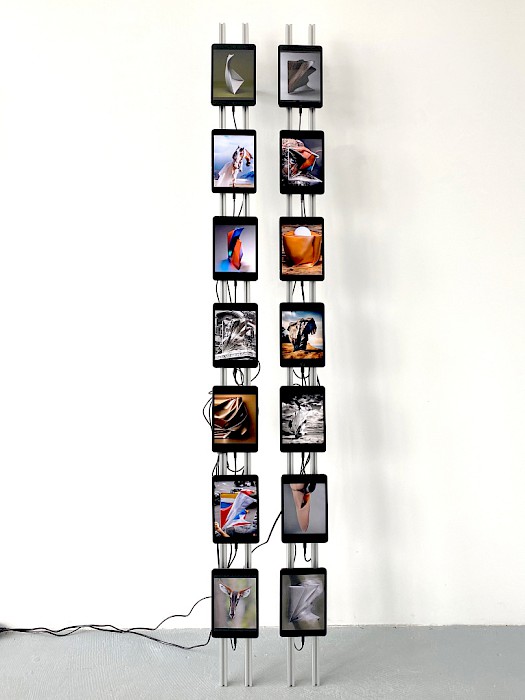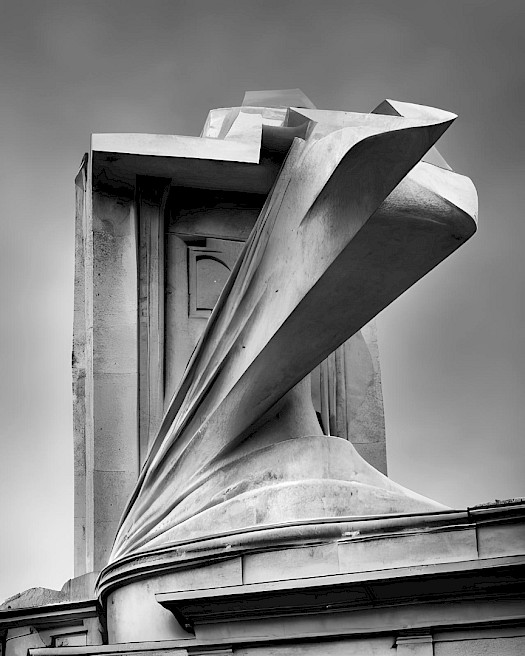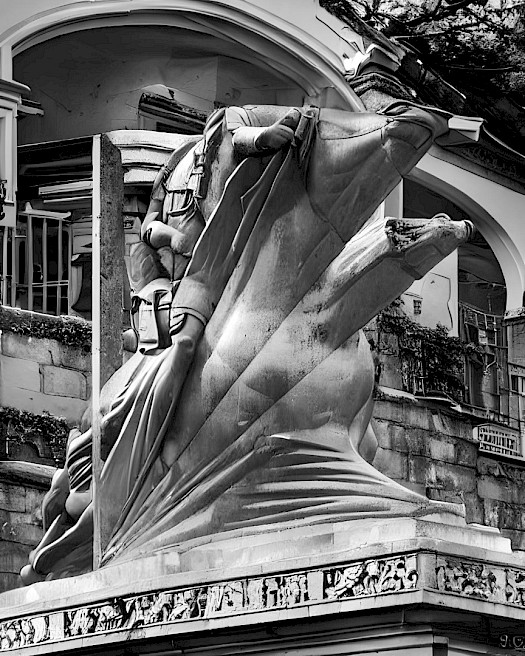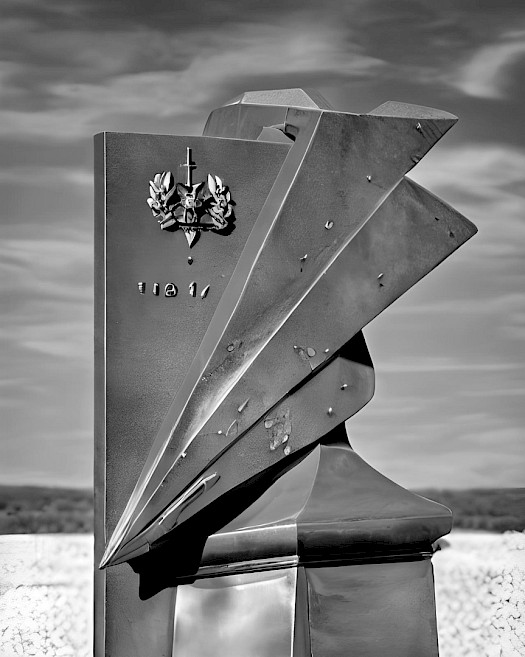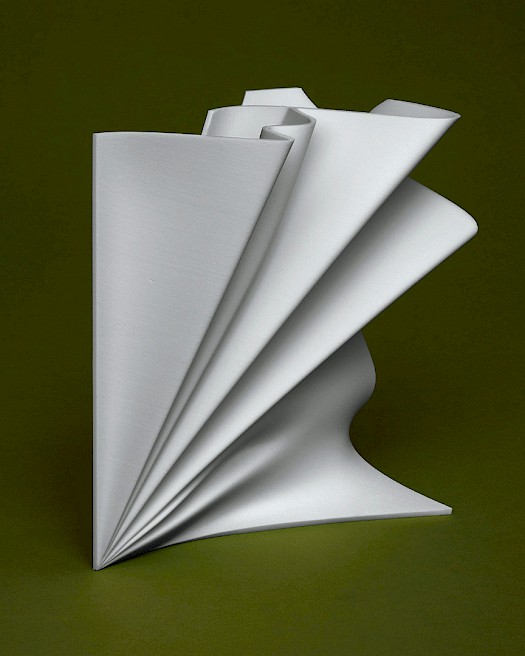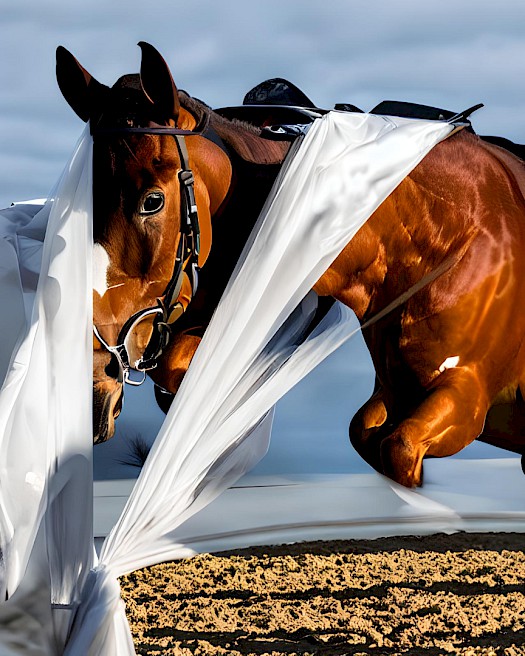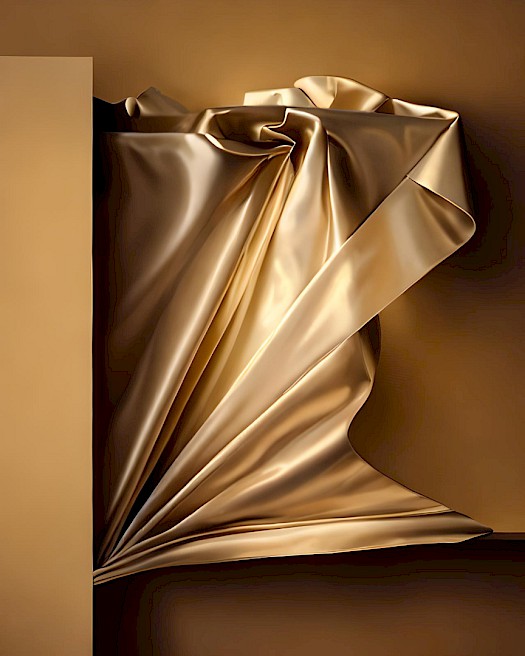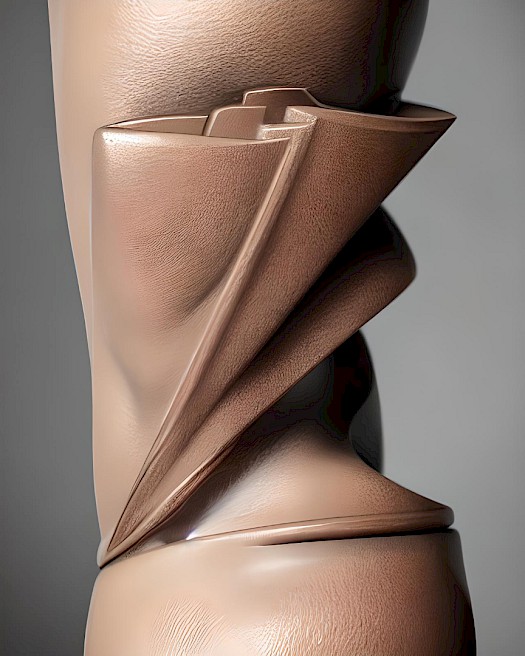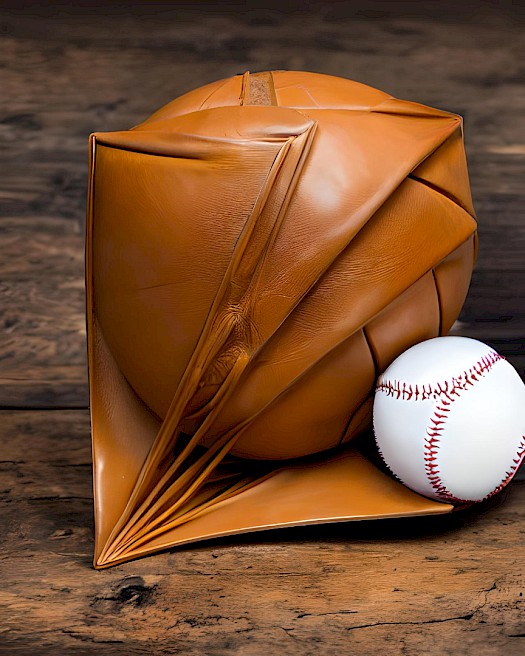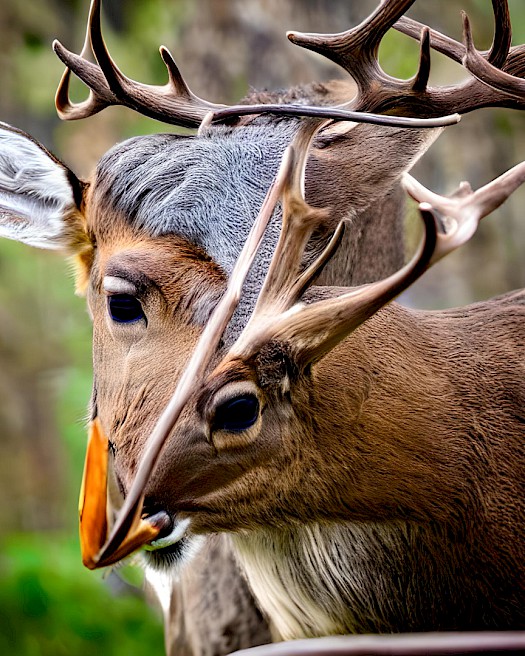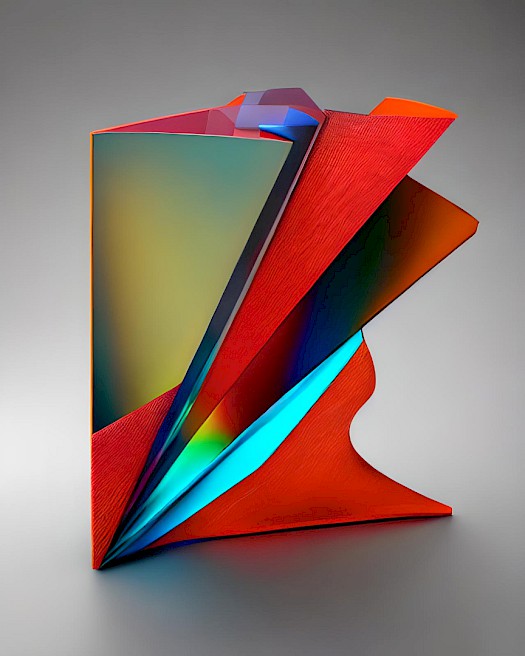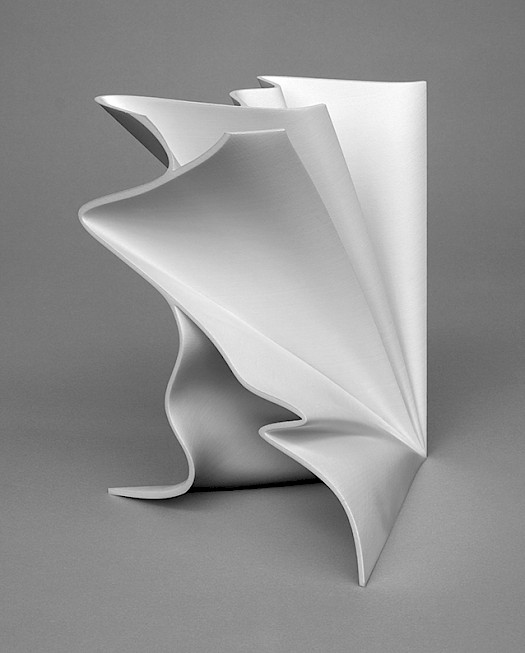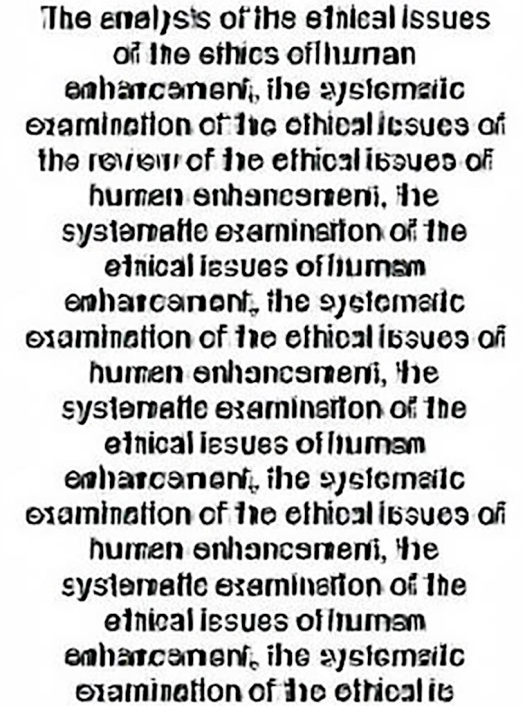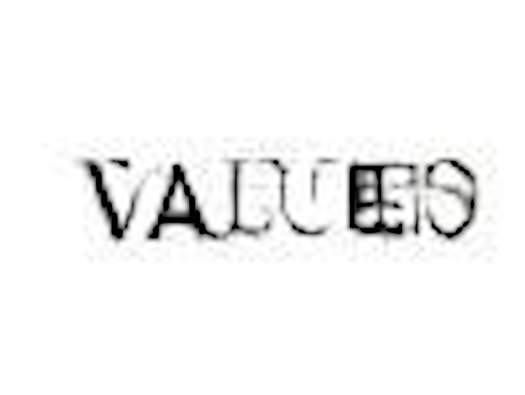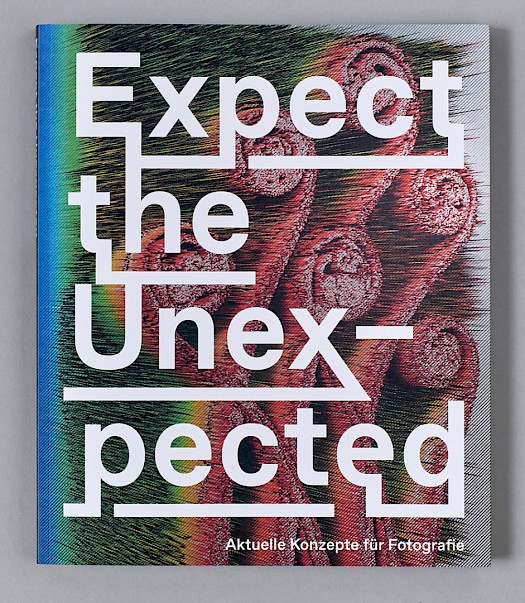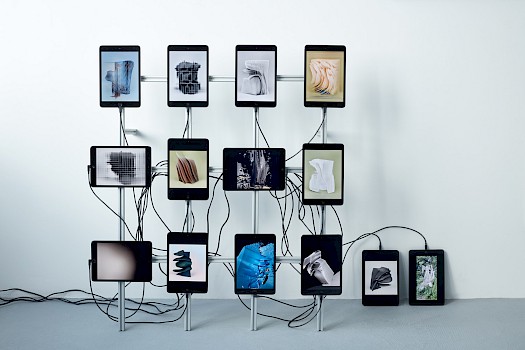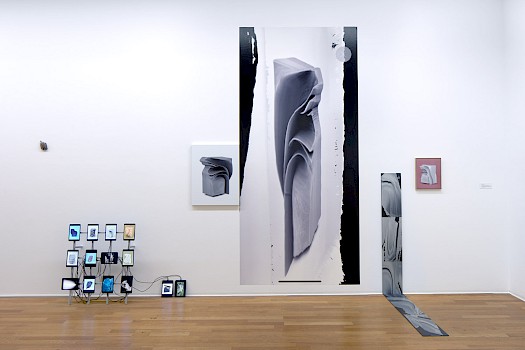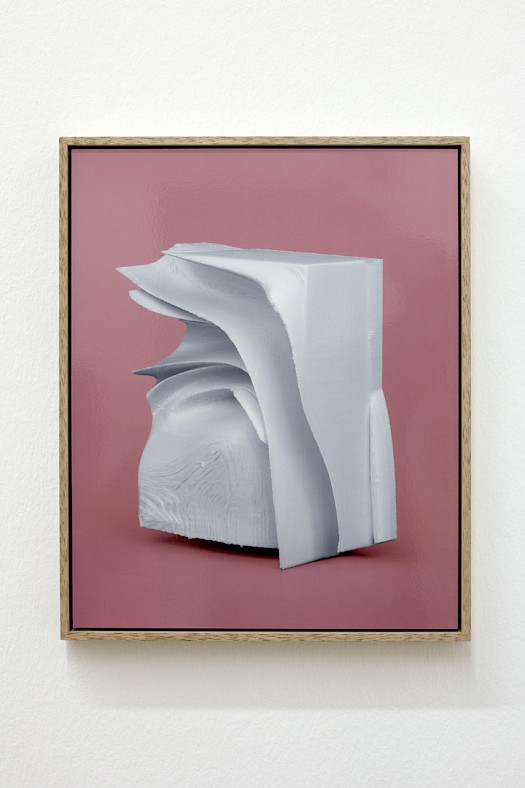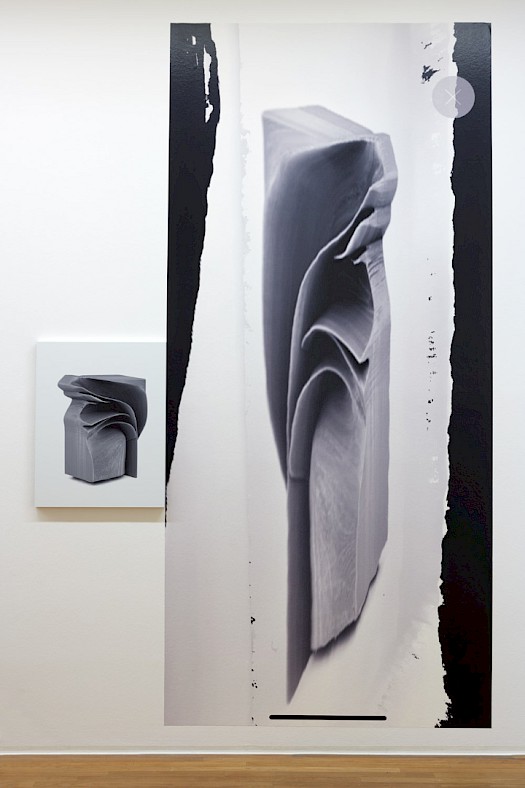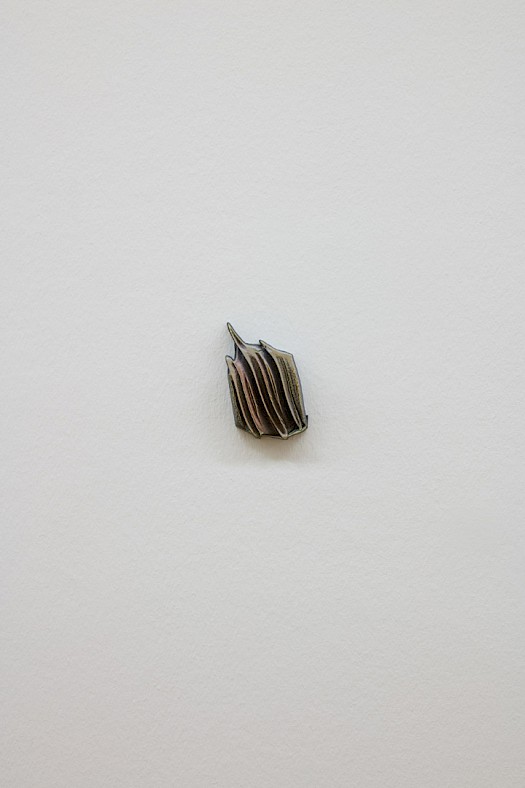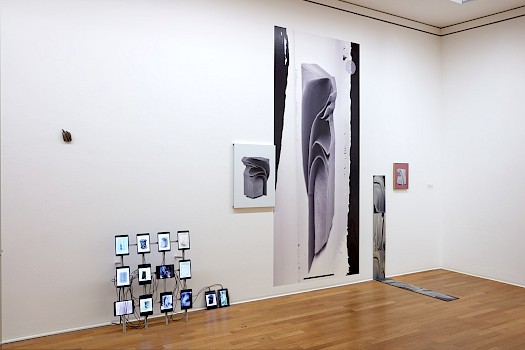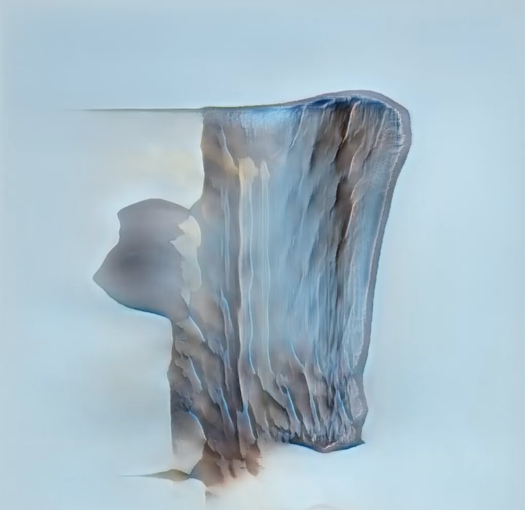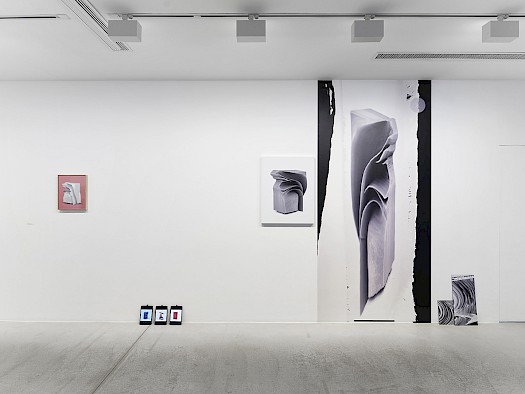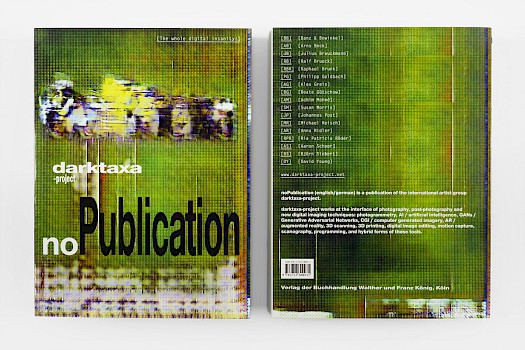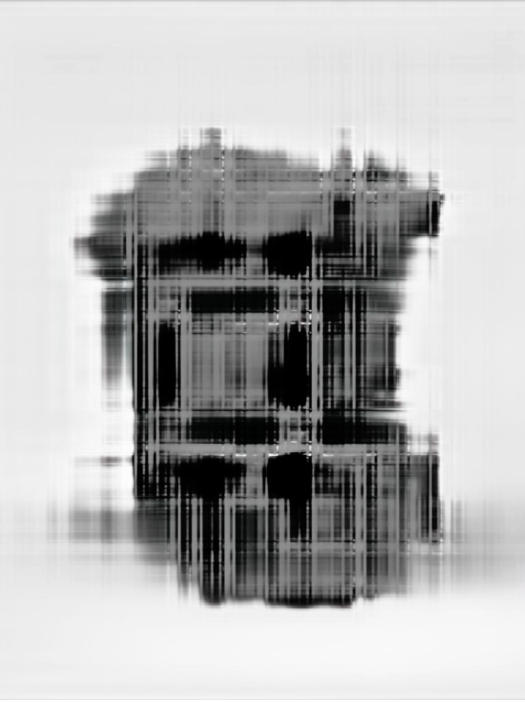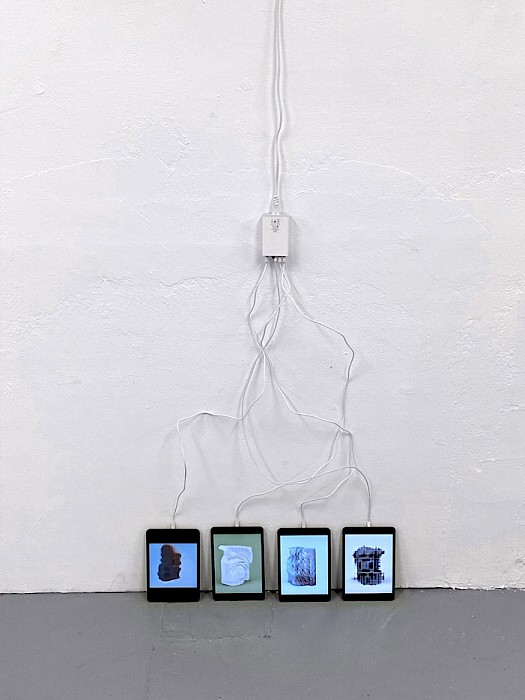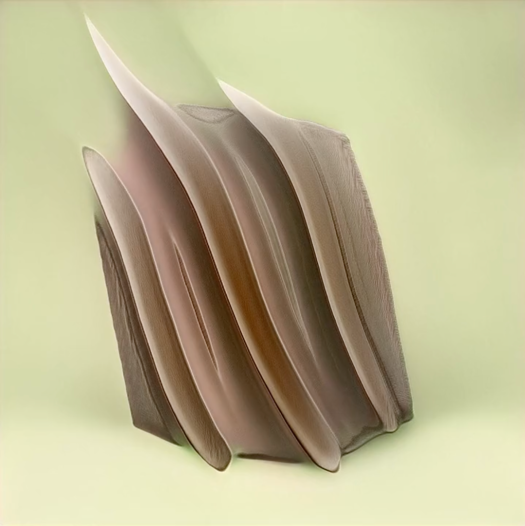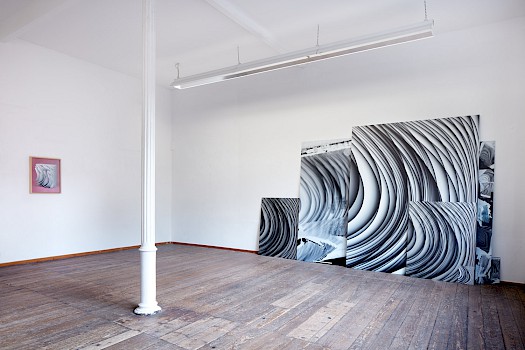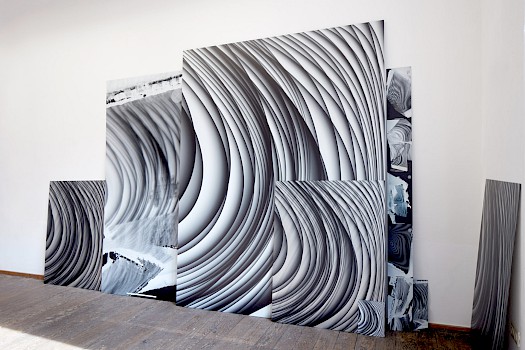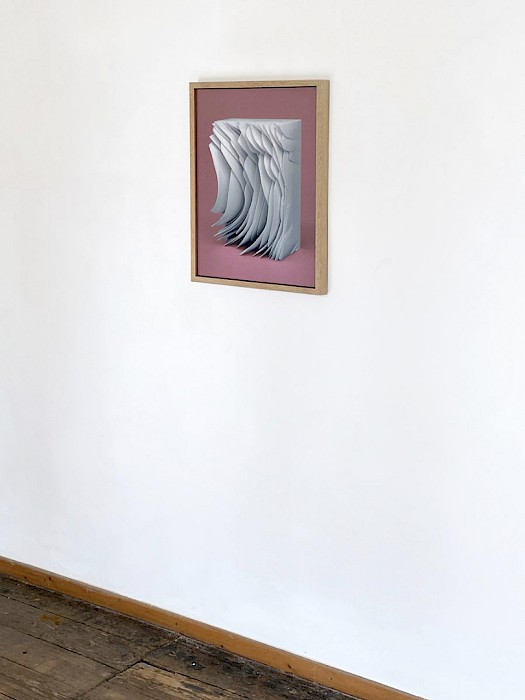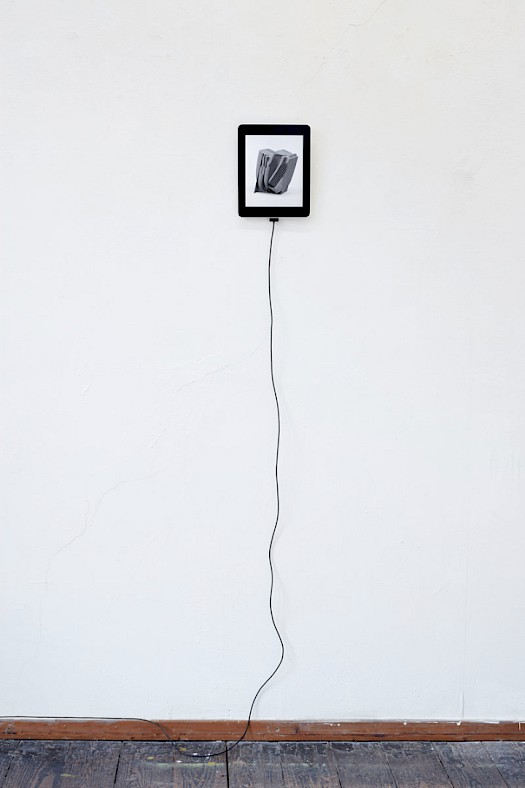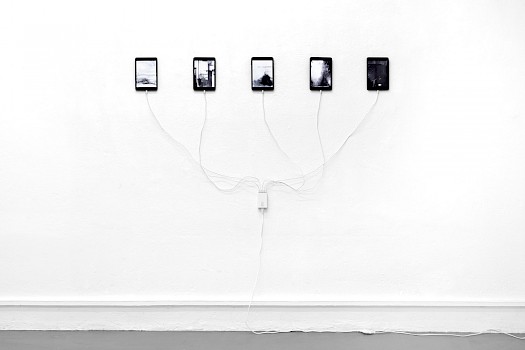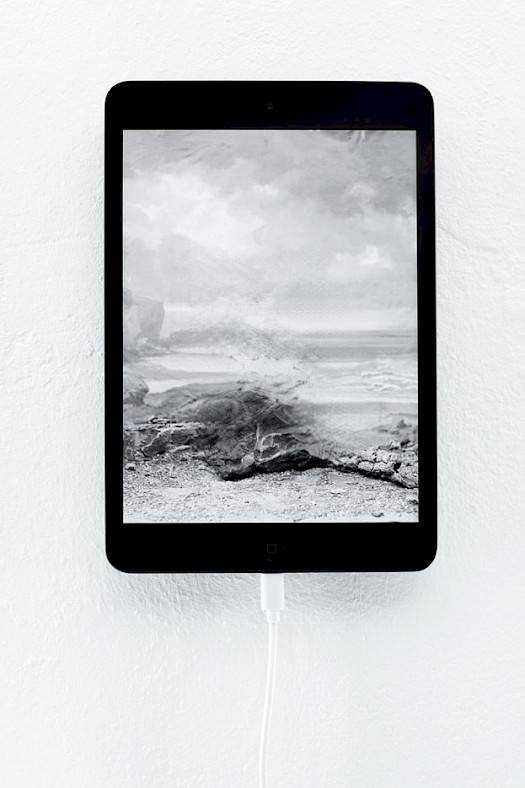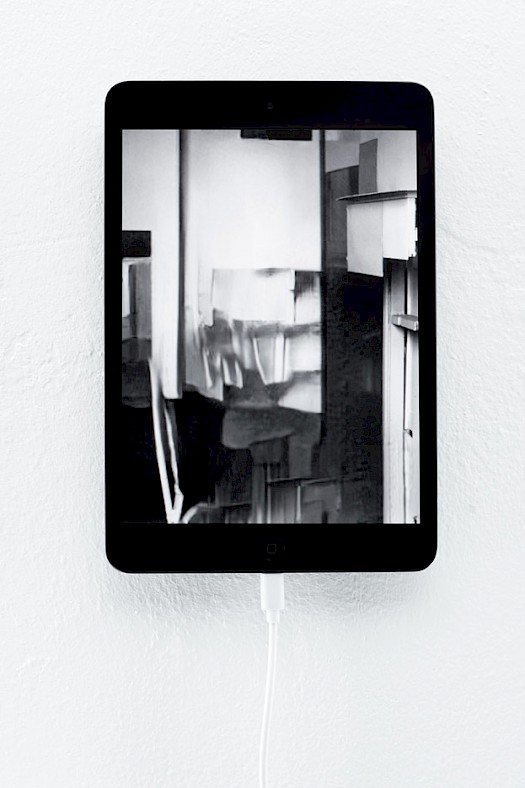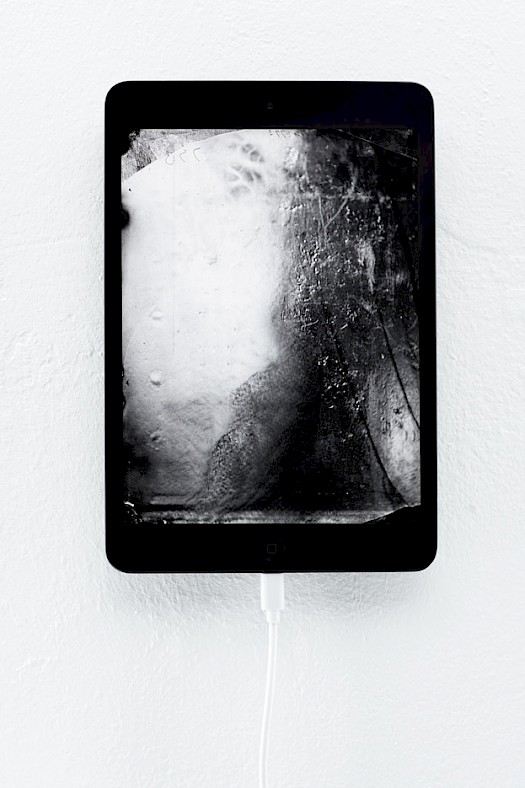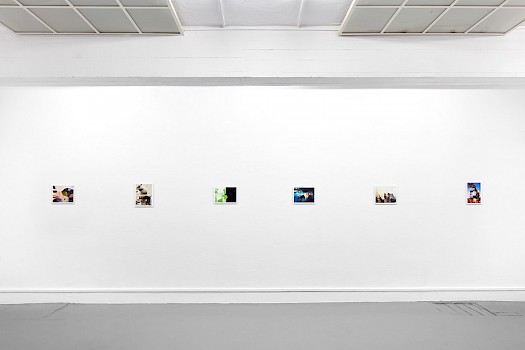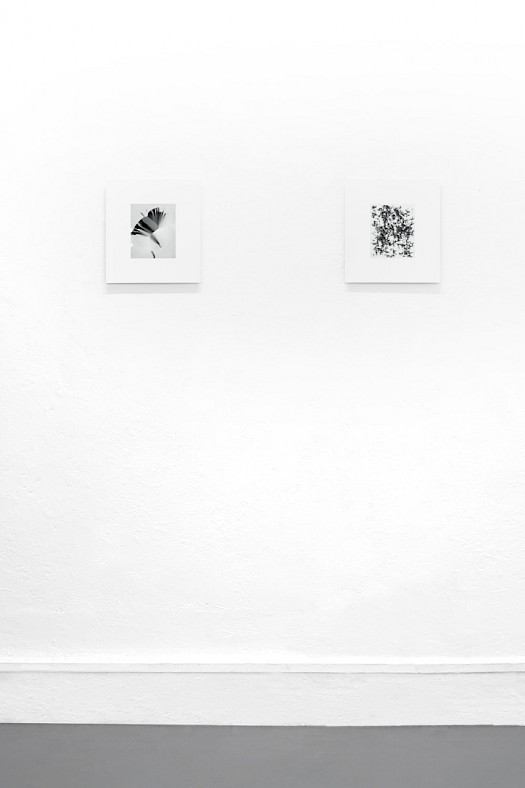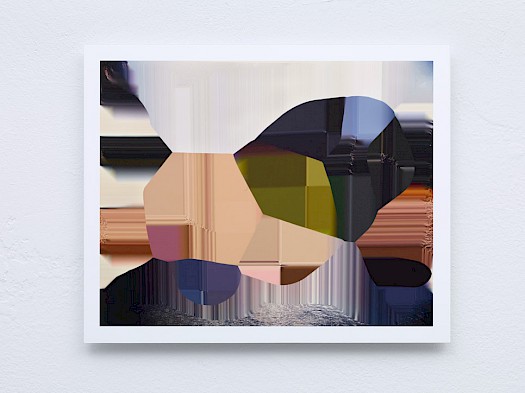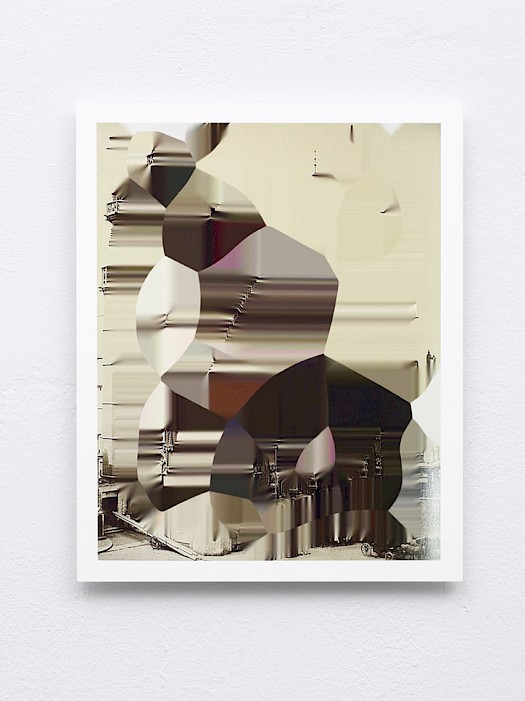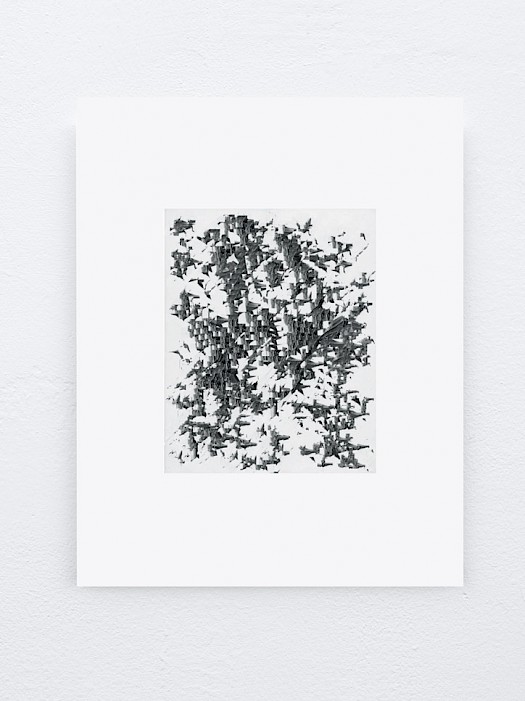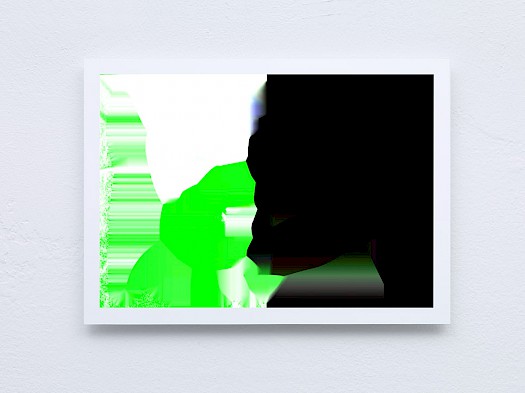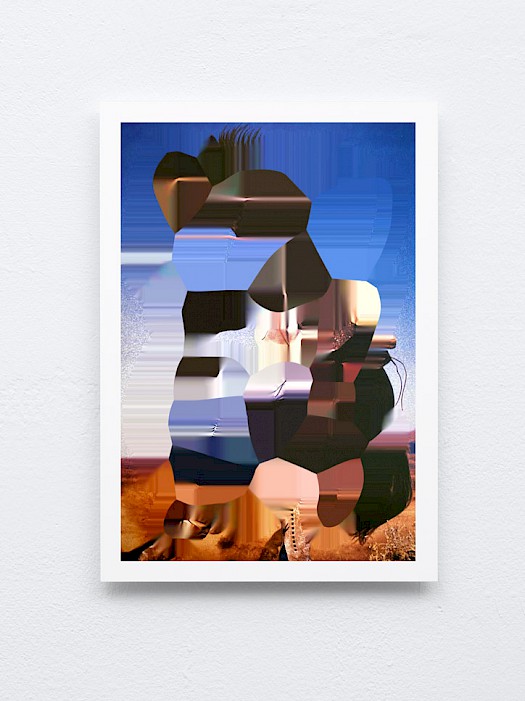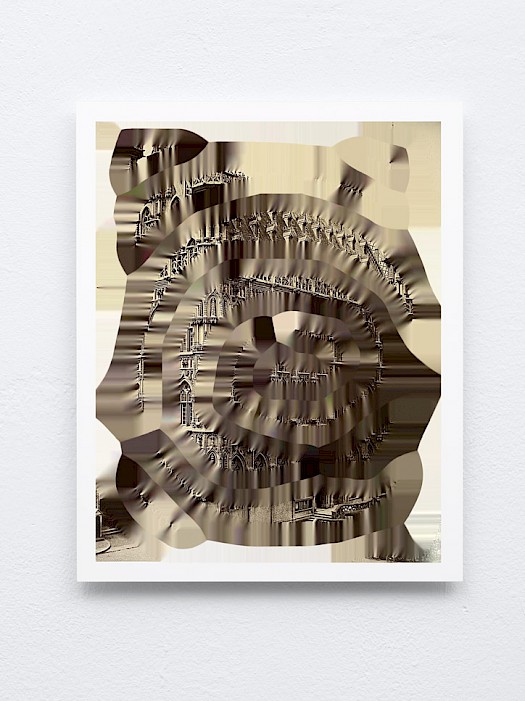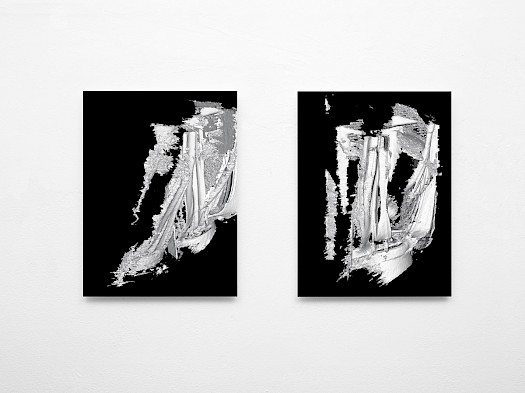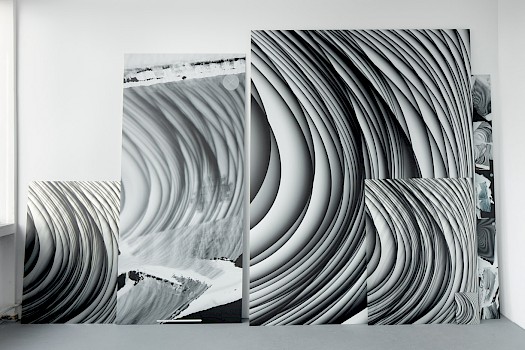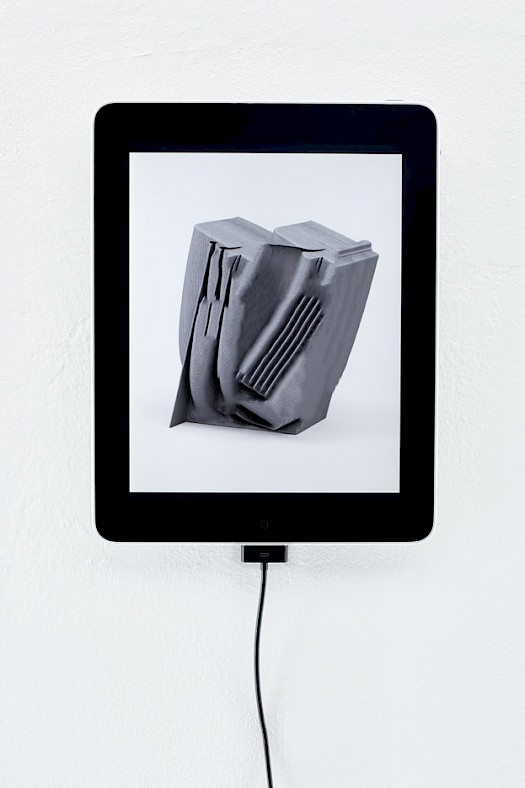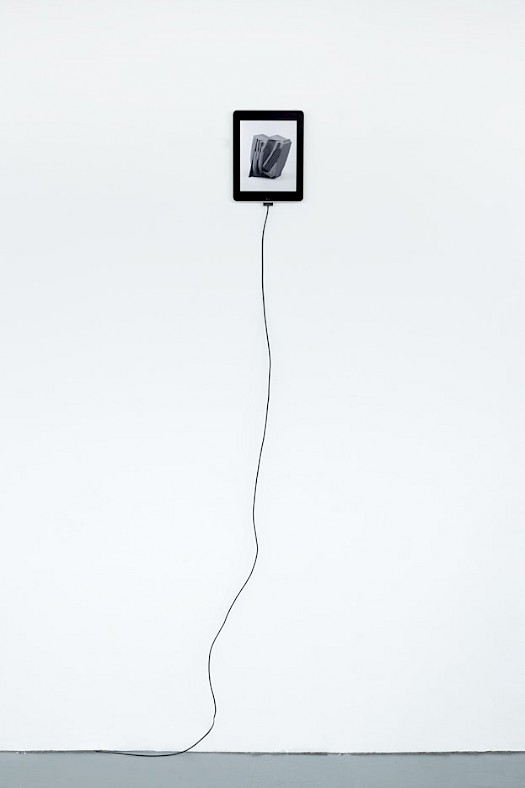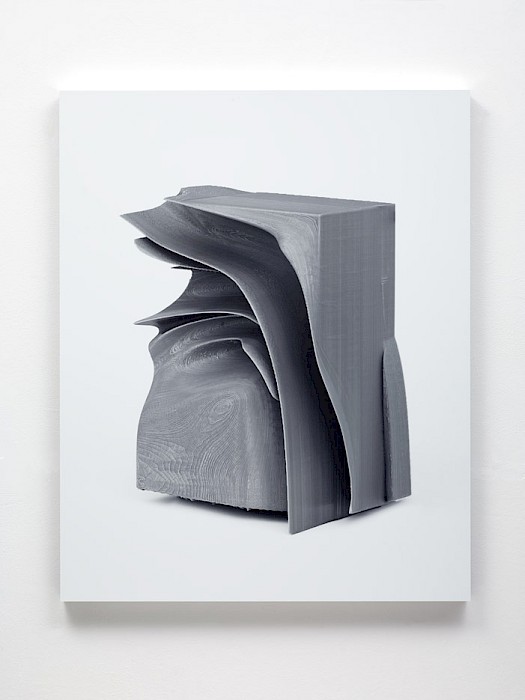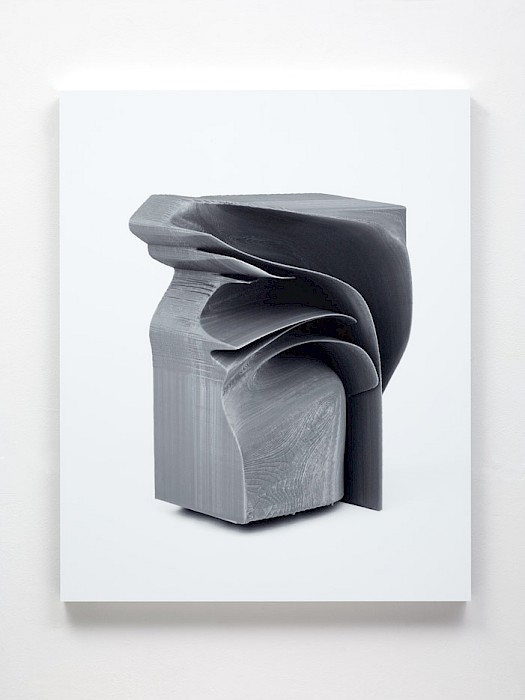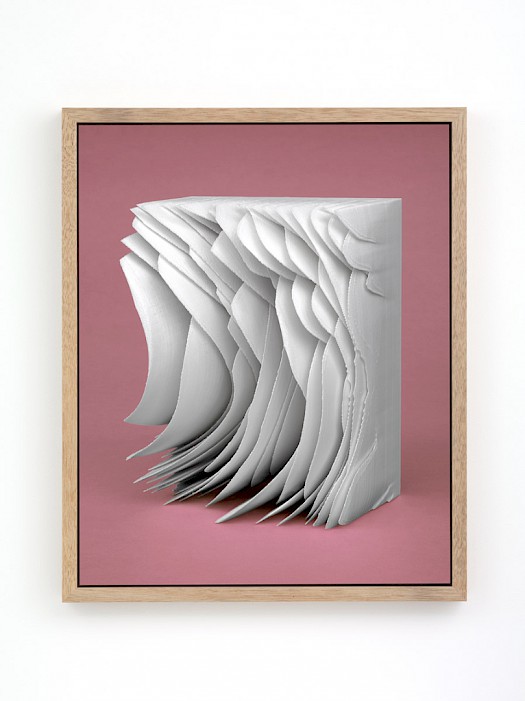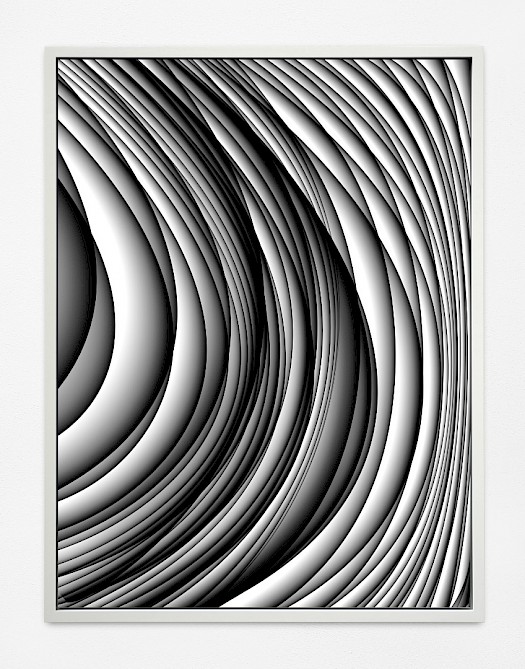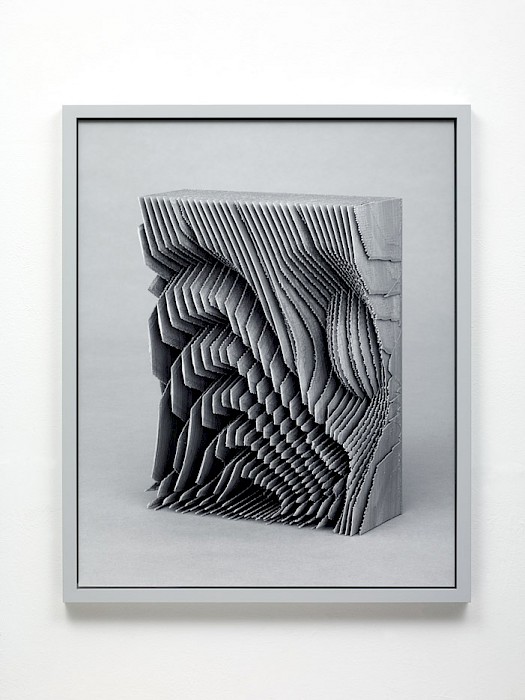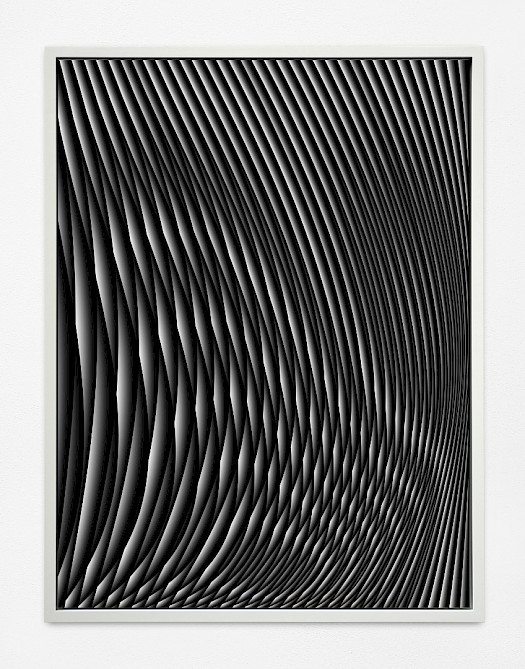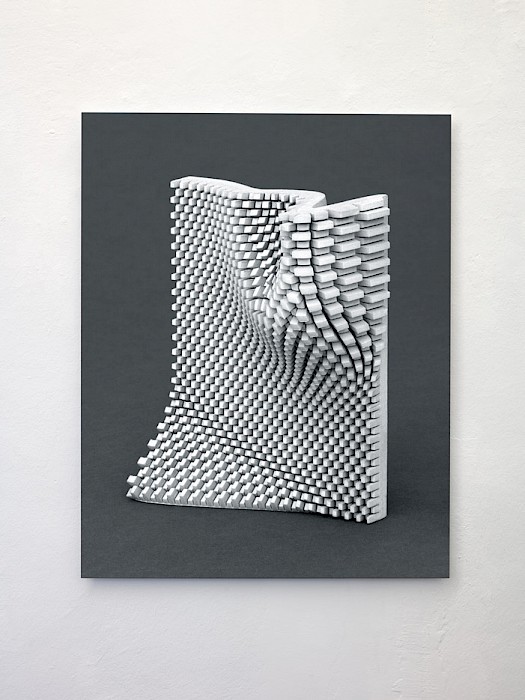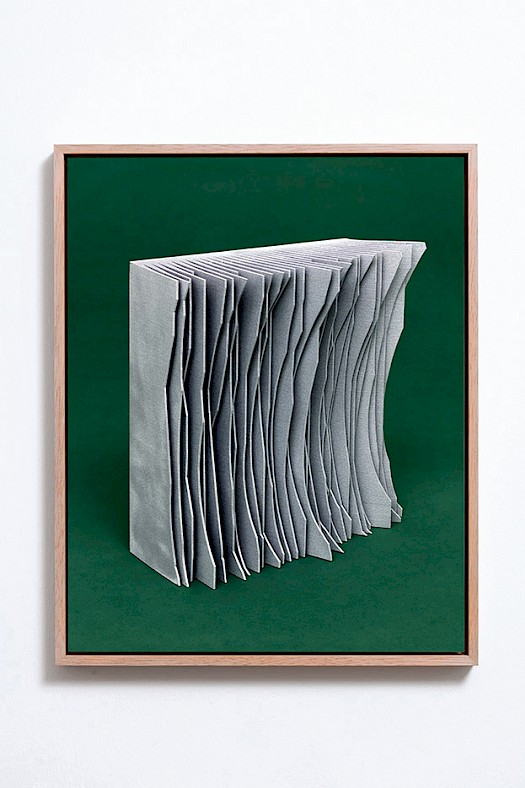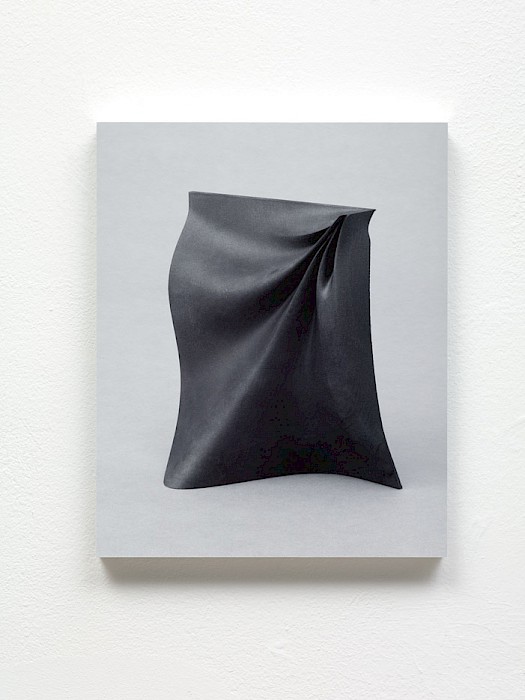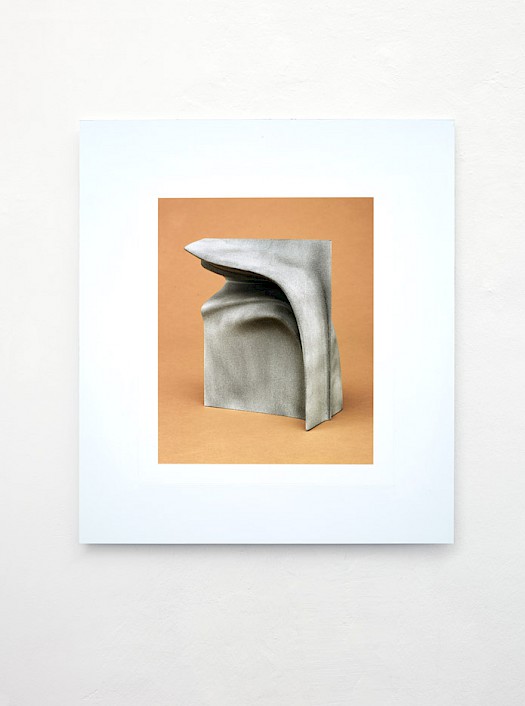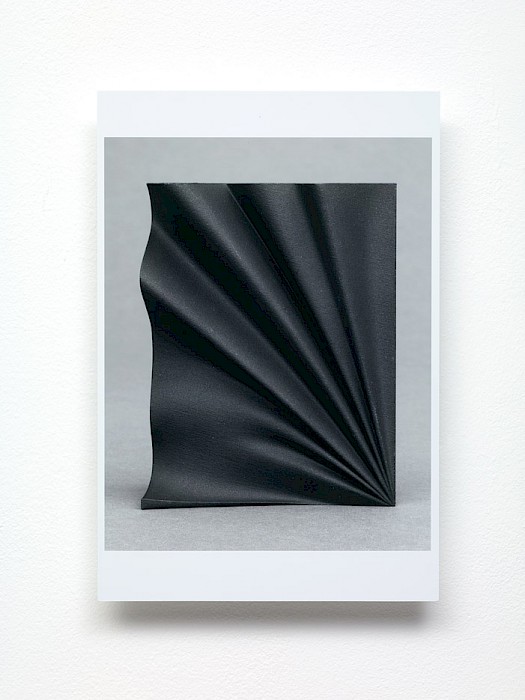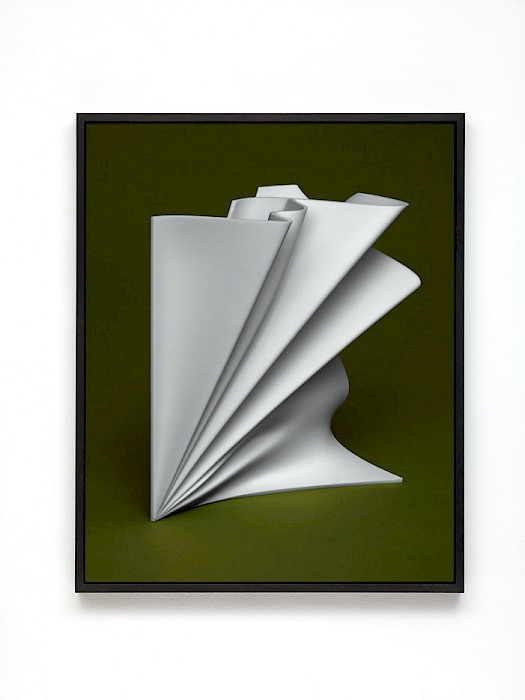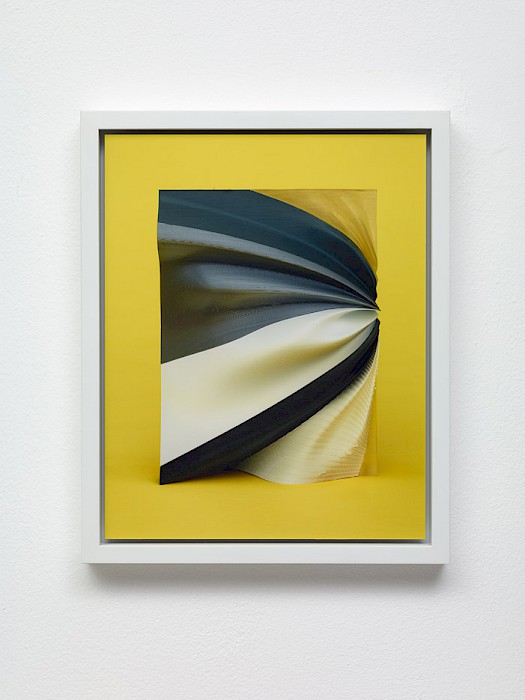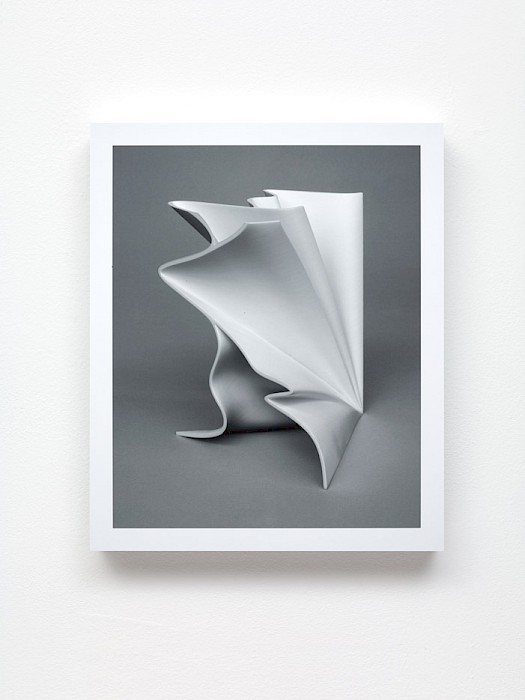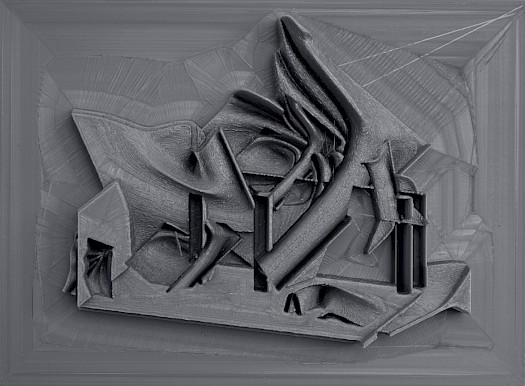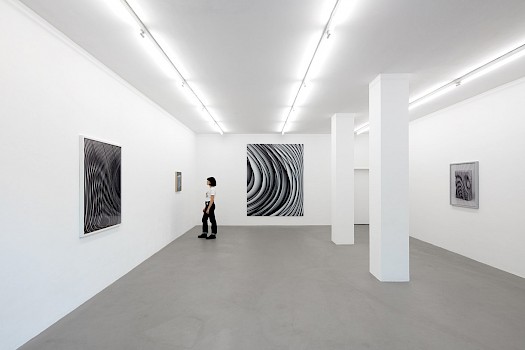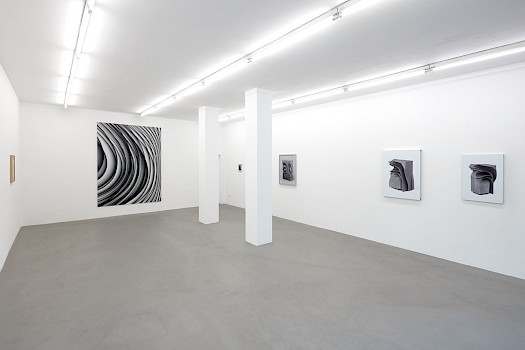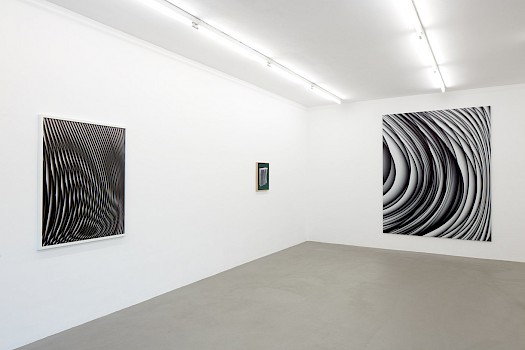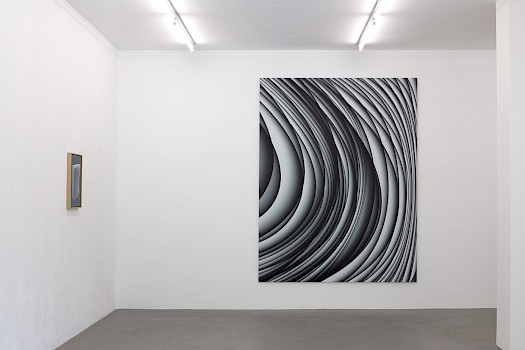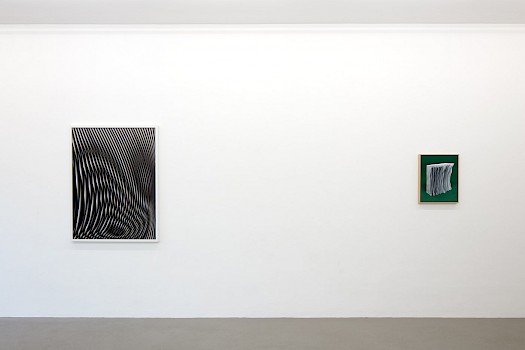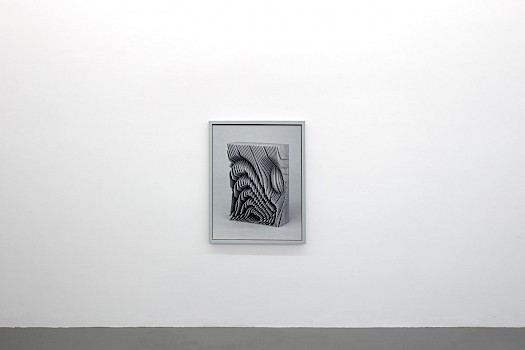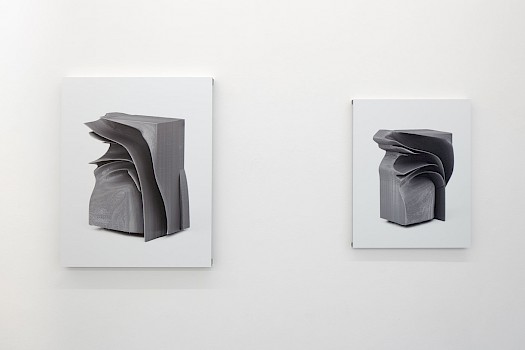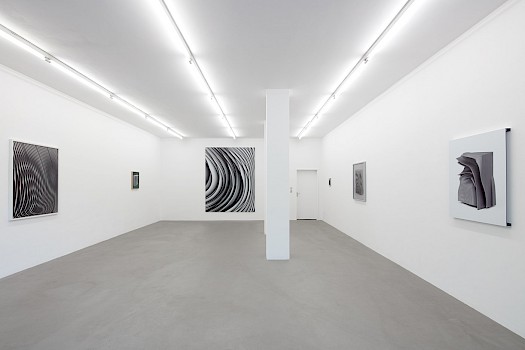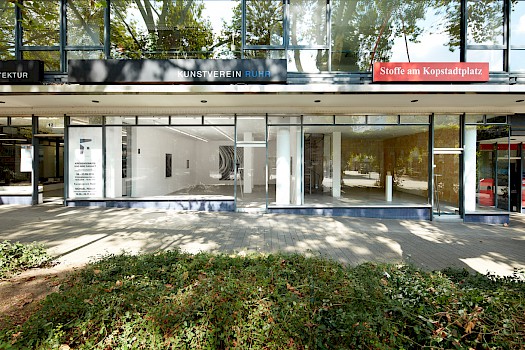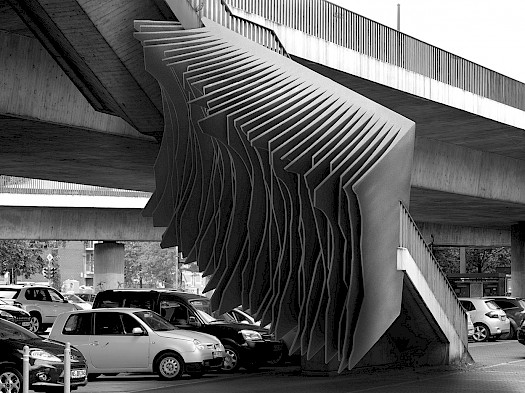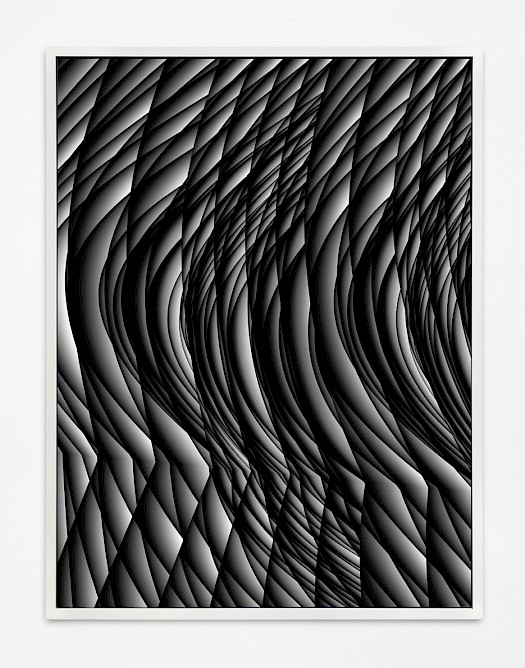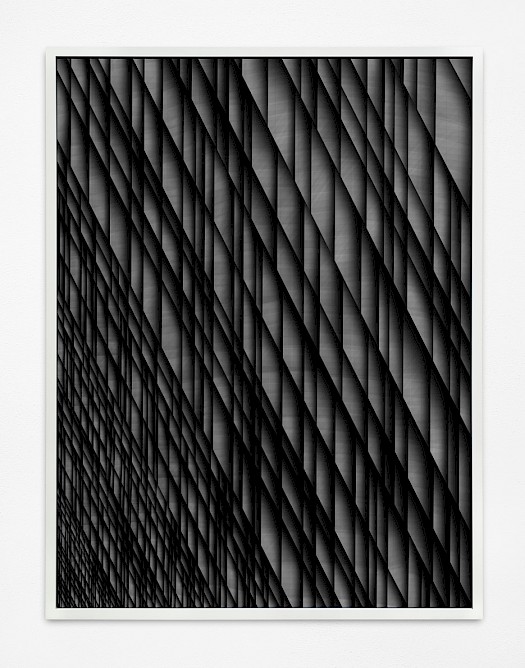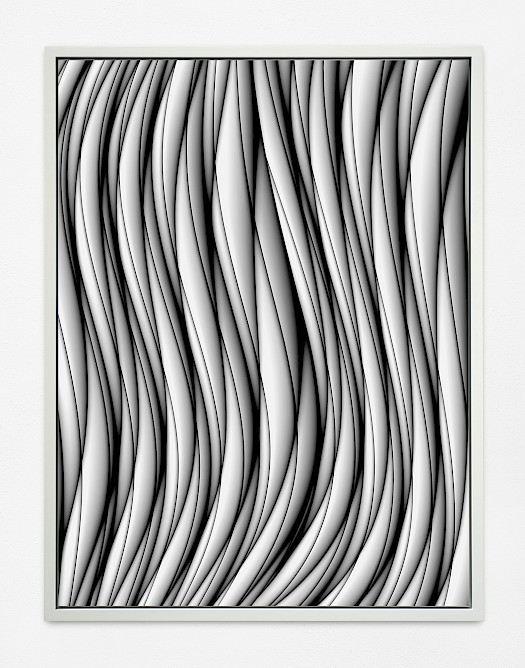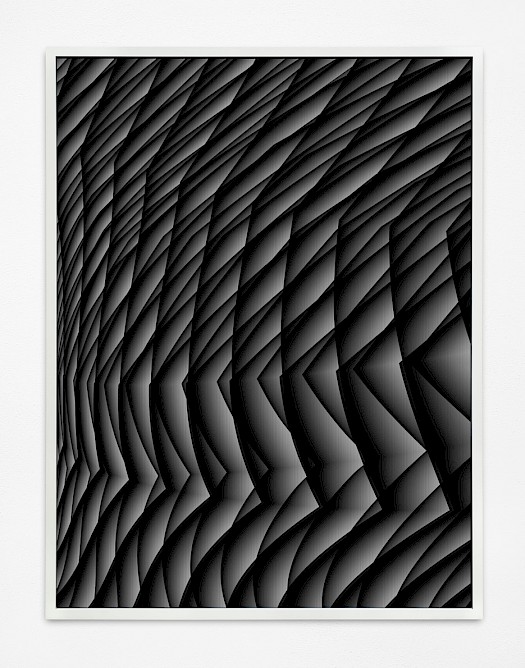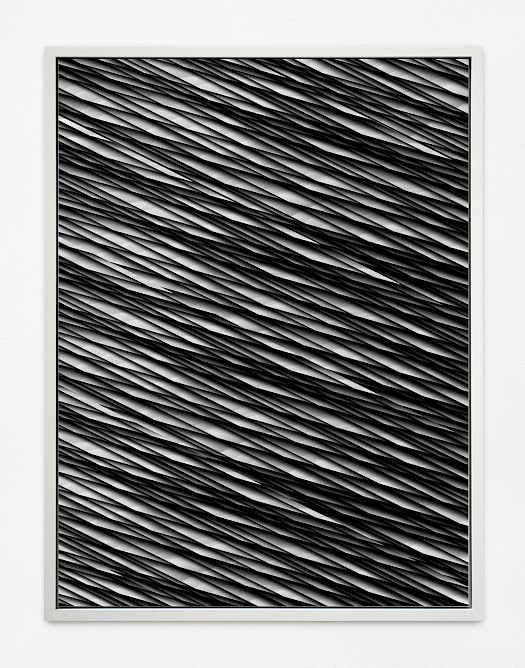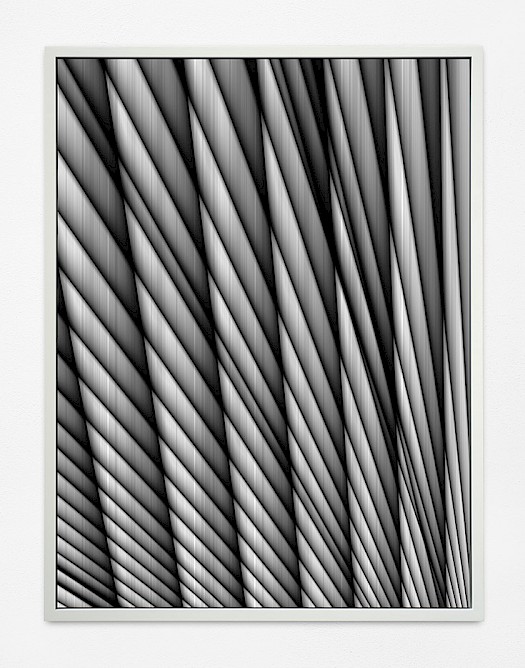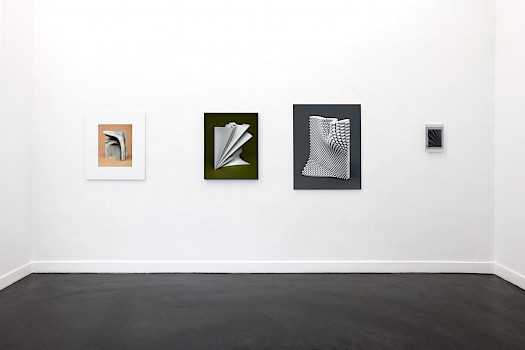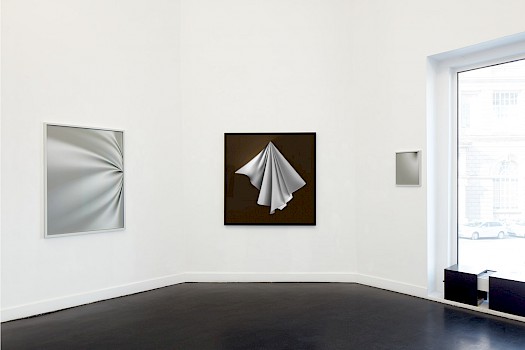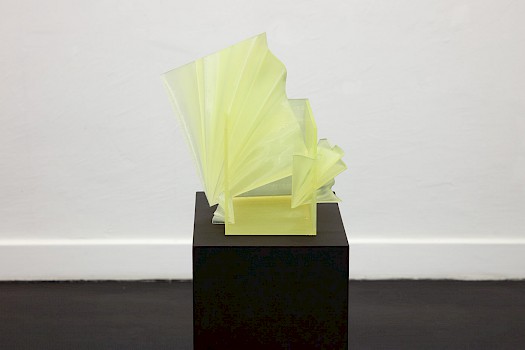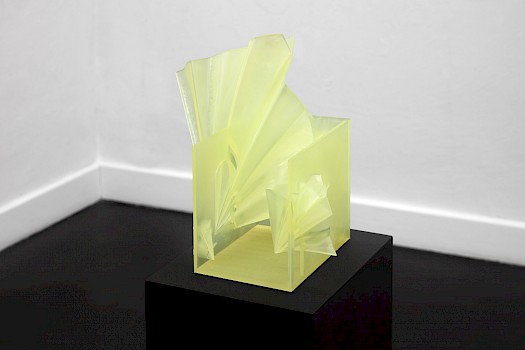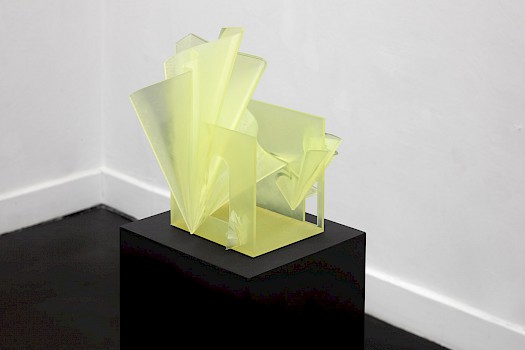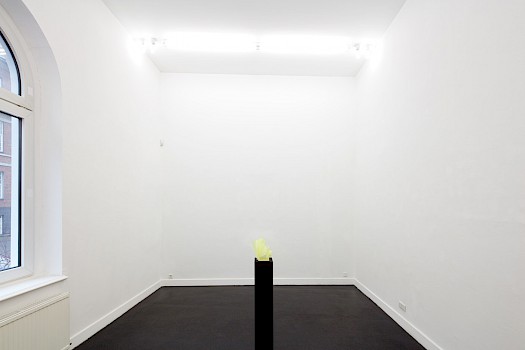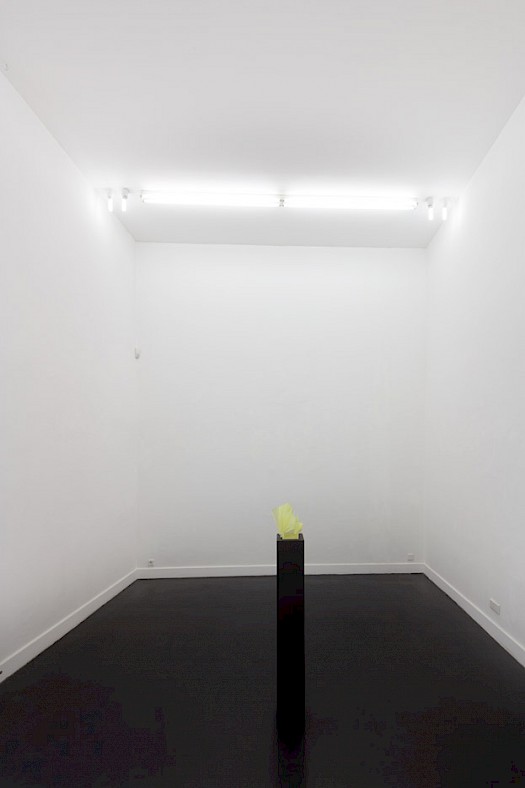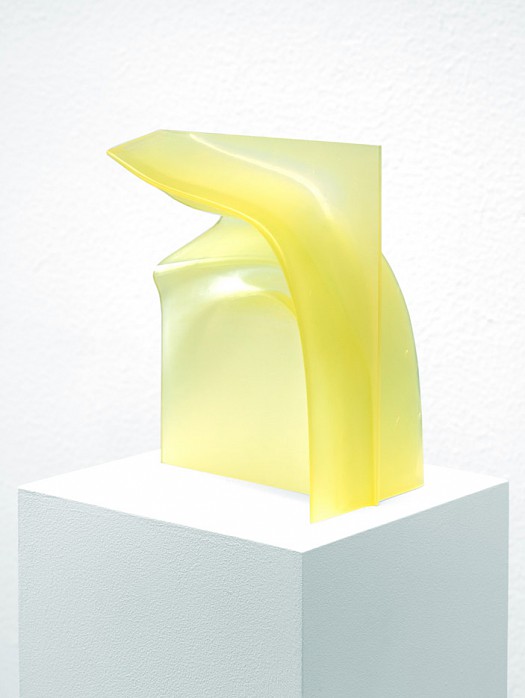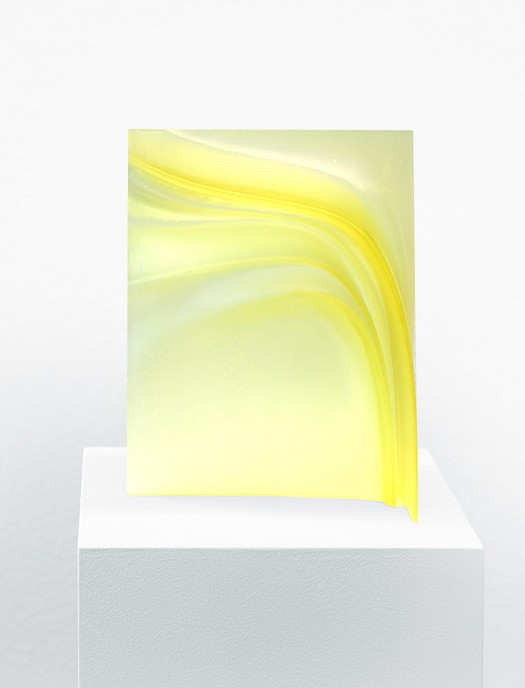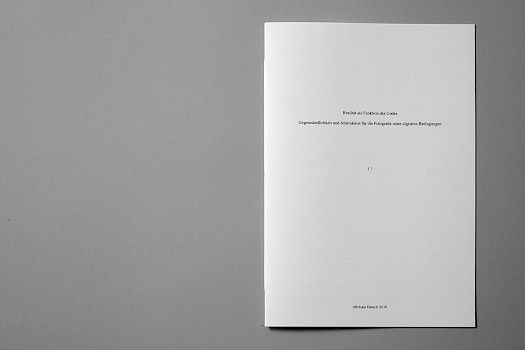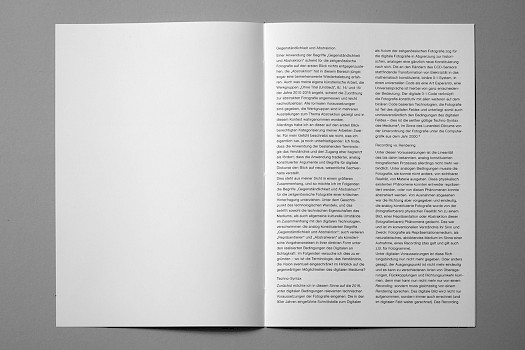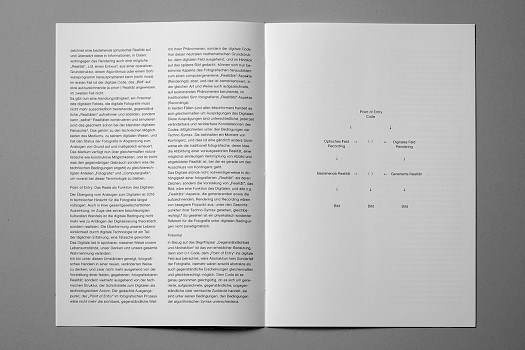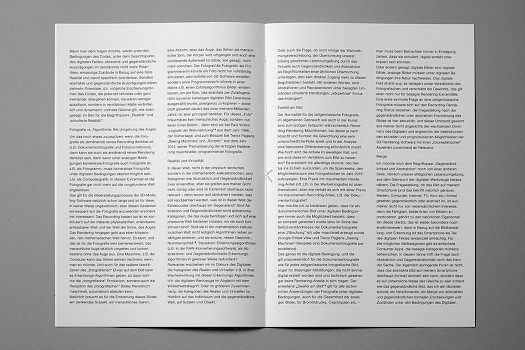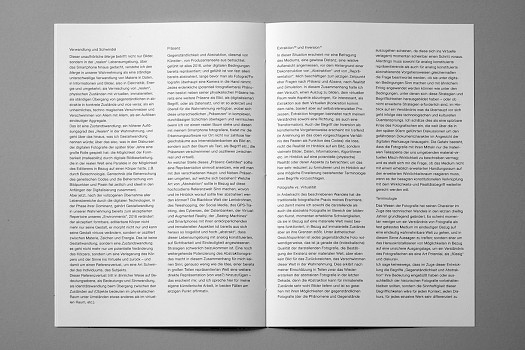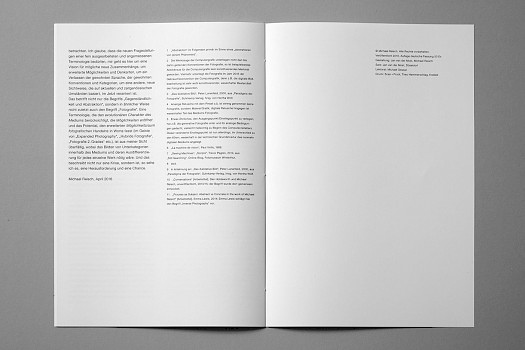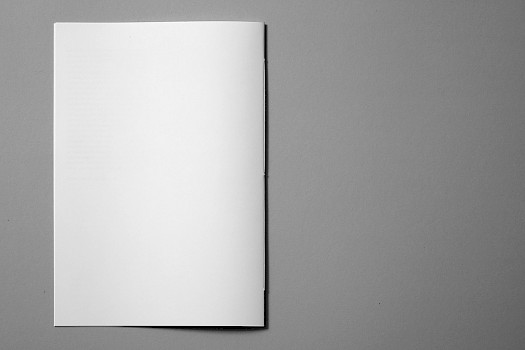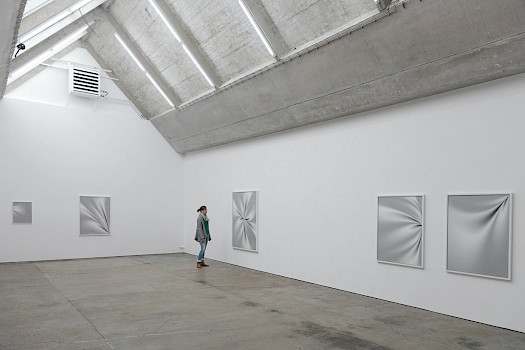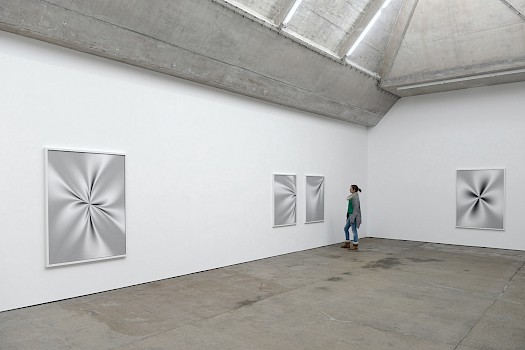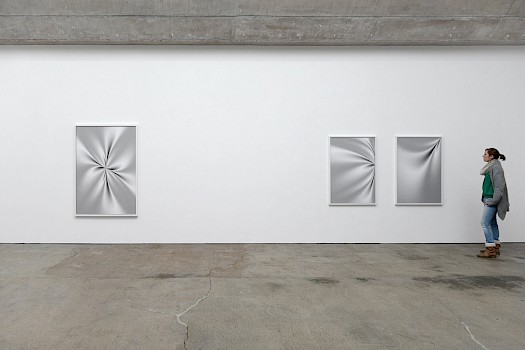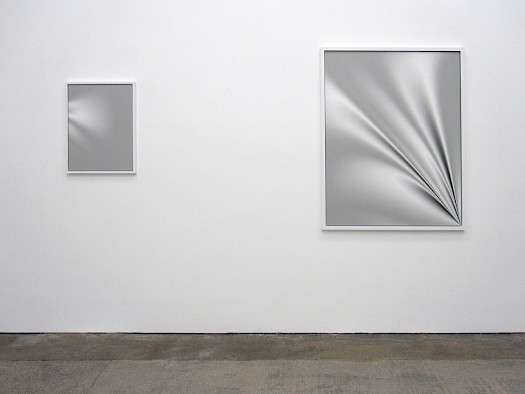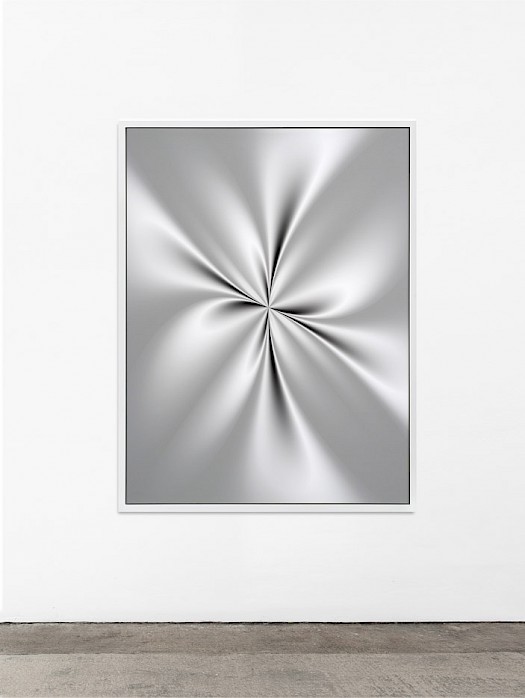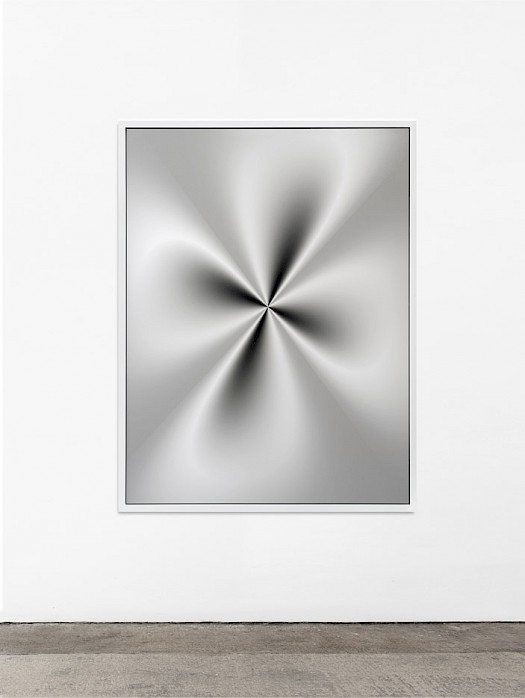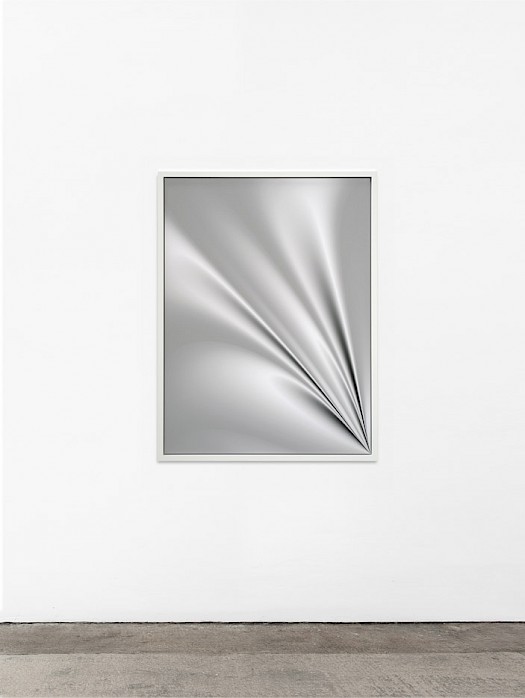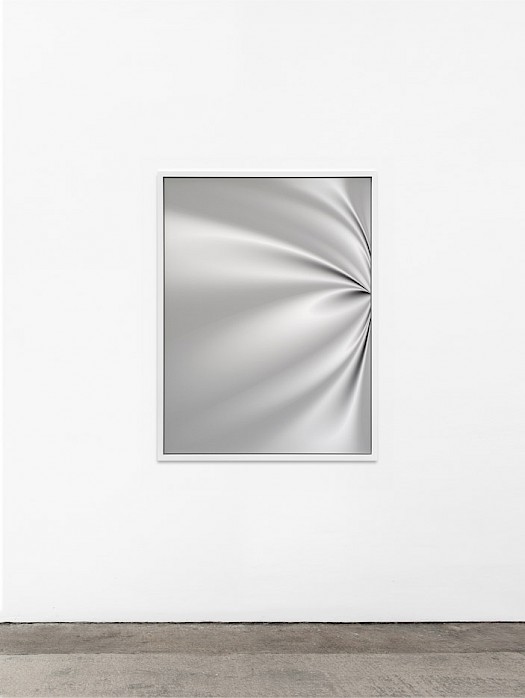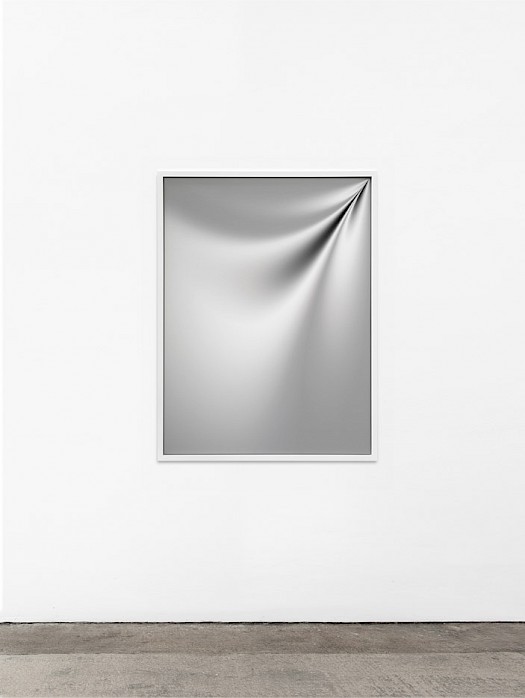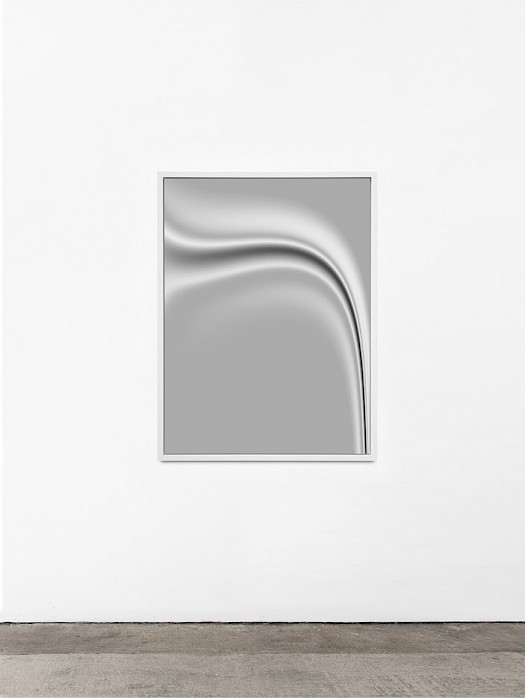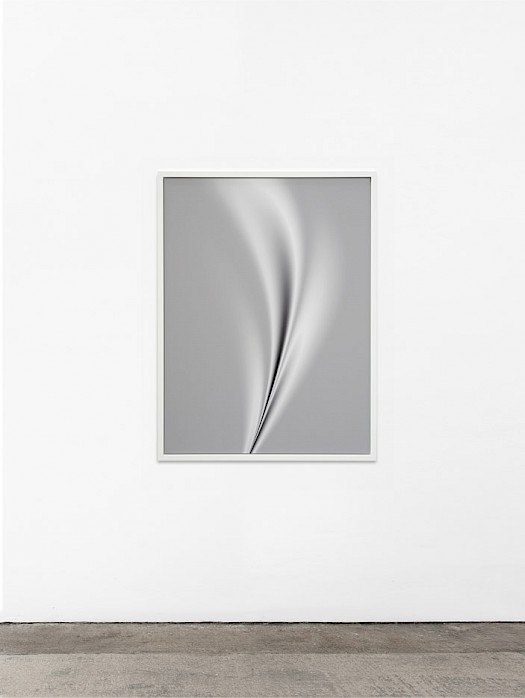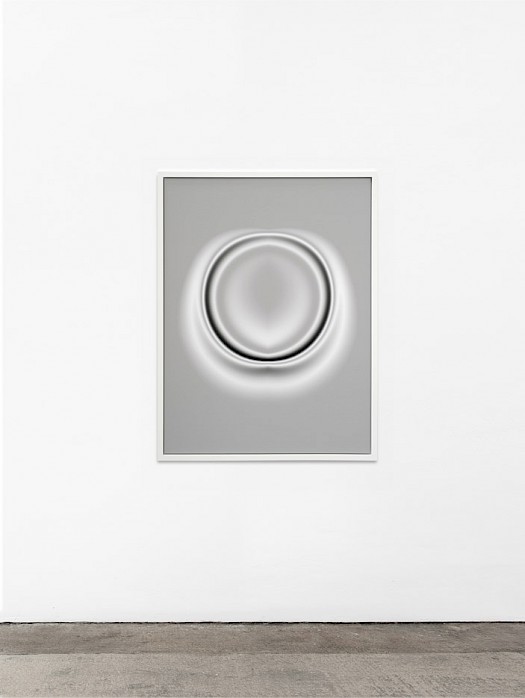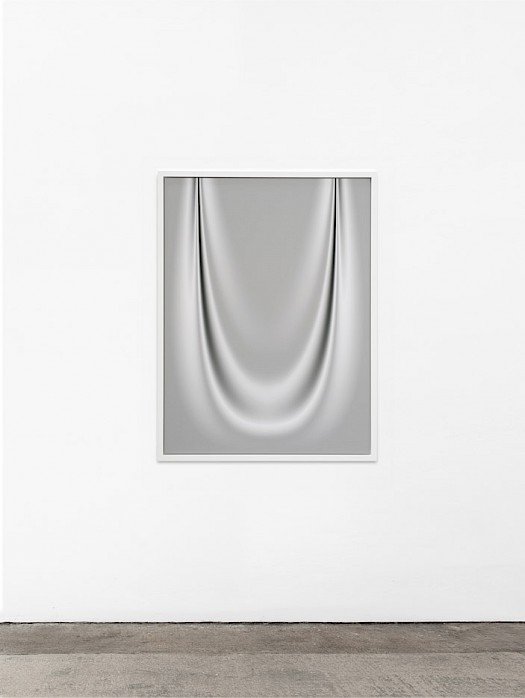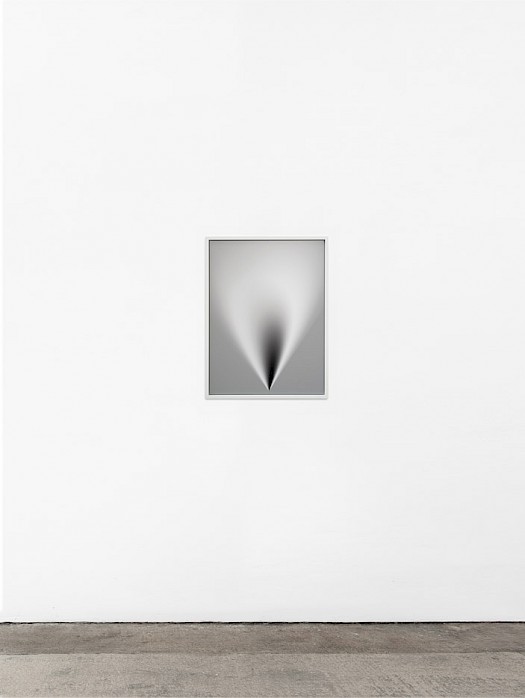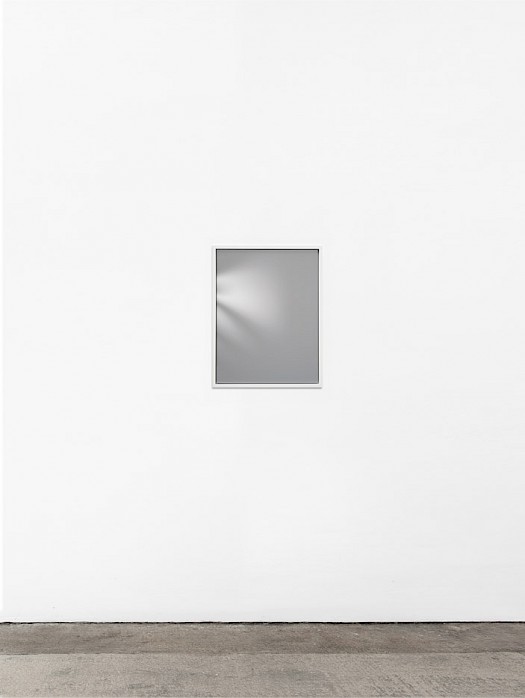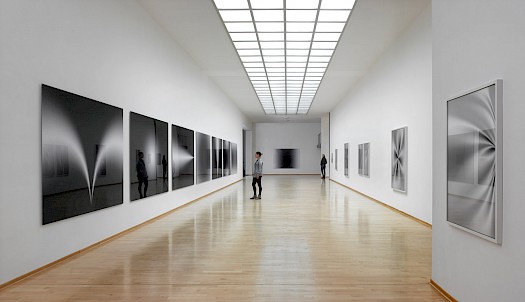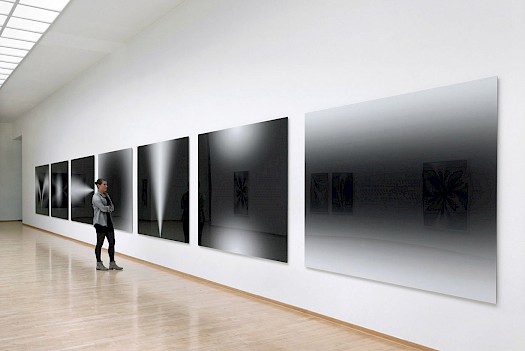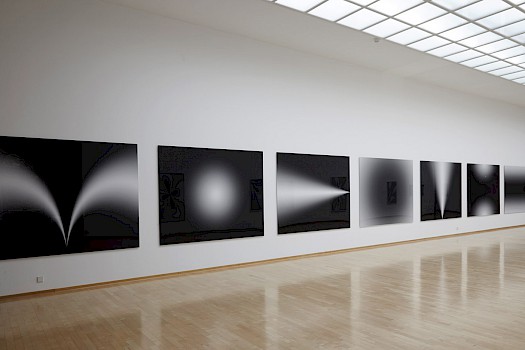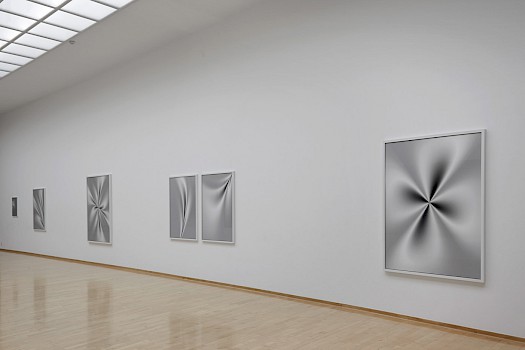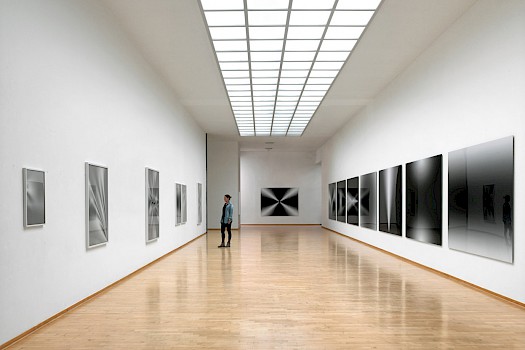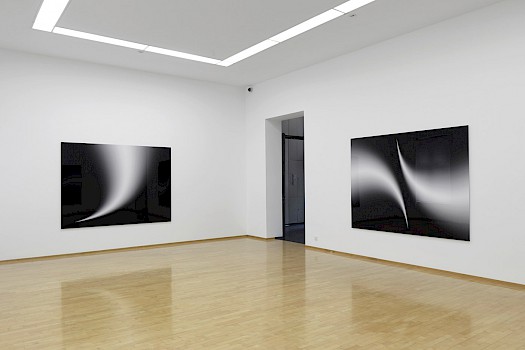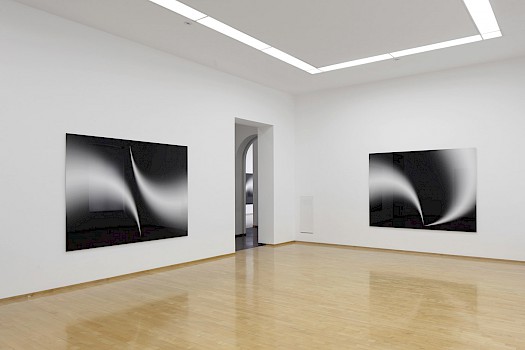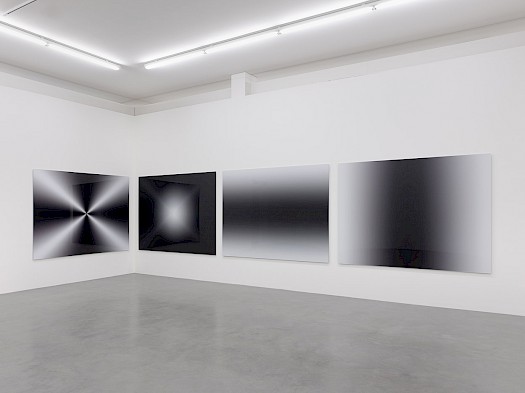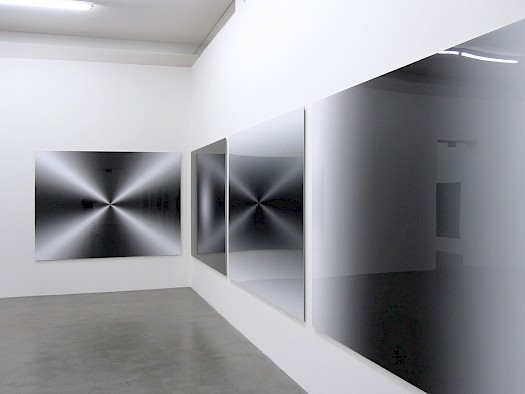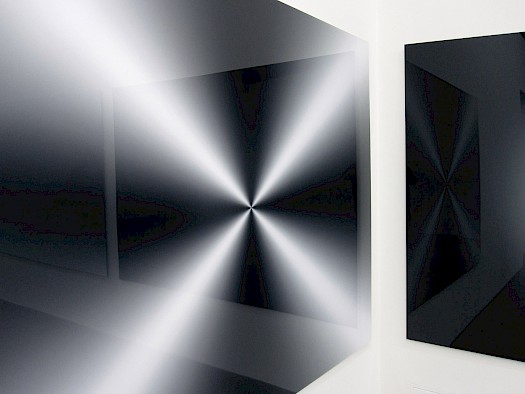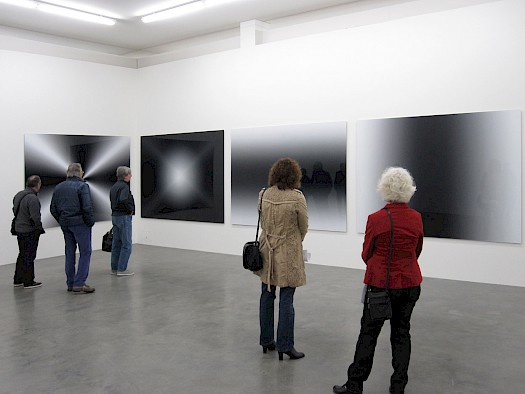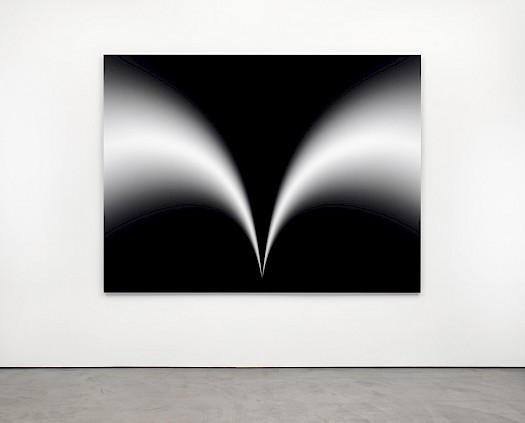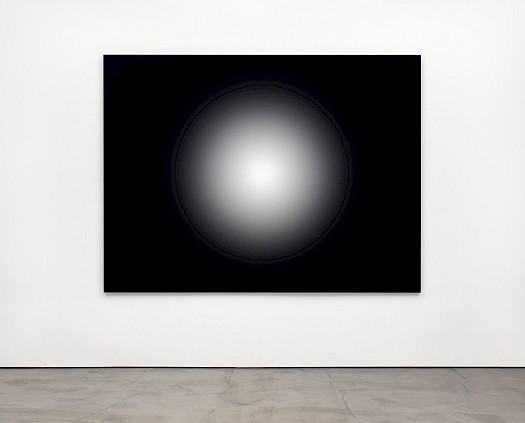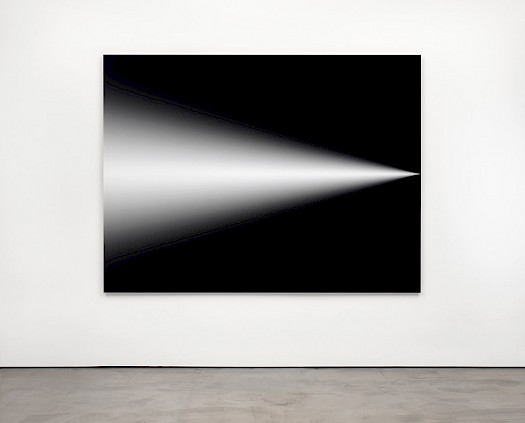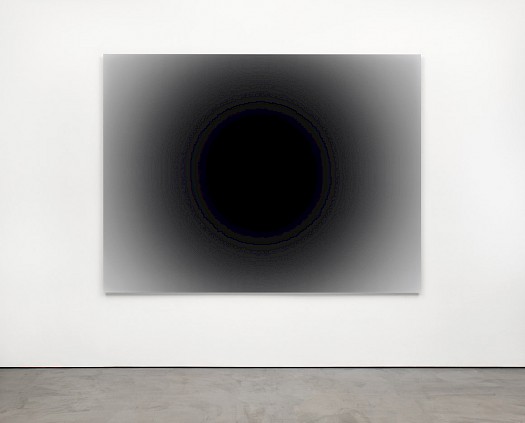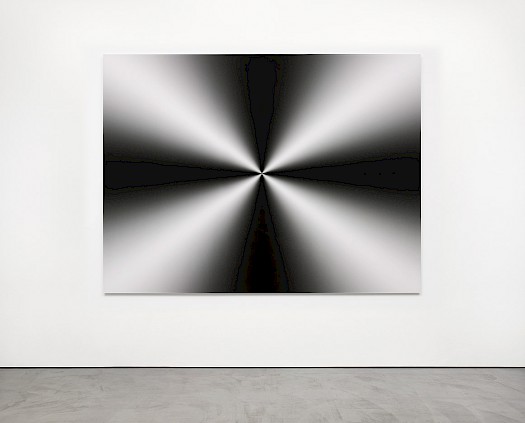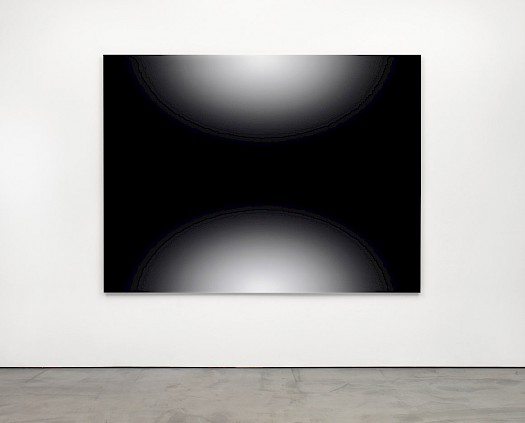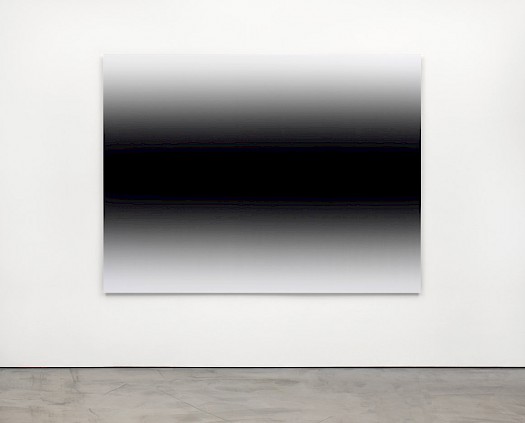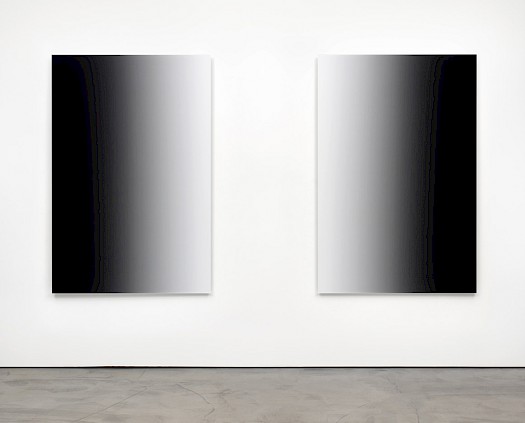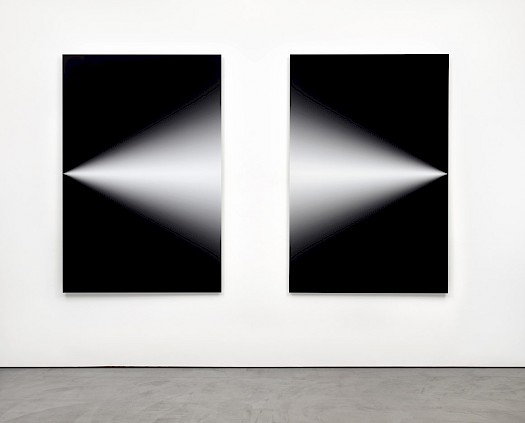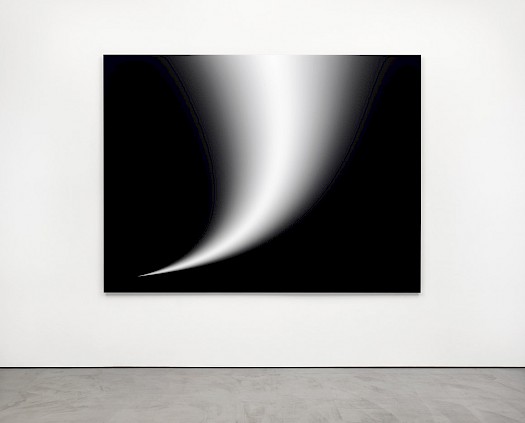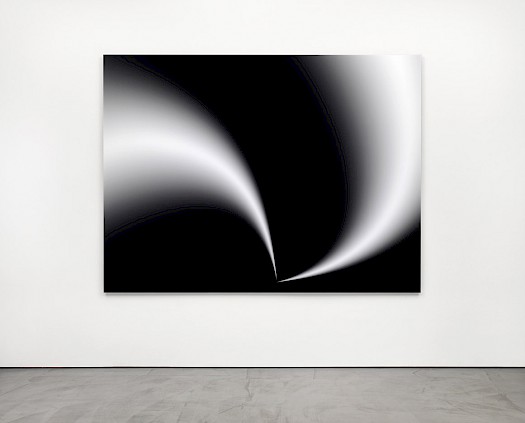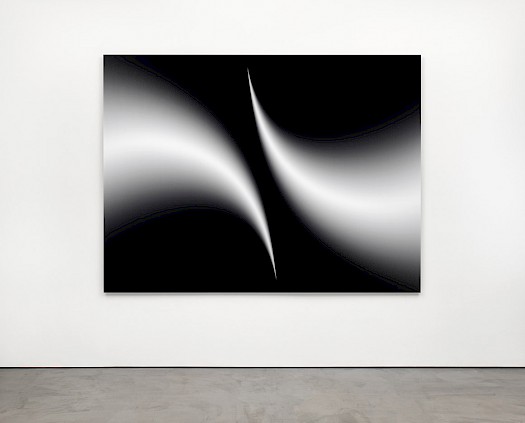english: „MURRAY; DONDIE; REBECCA - trust in those who supposedly know”, working process, 11-2023
Michael Reisch's works in the work group „Murray, Dondie, Rebecca - trust in those who supposedly know” are created in multi-layered work processes through generative use of image editing software, 3D software, 3D printing, digital photography and current AI tools such as diffusion models and digital tools for image synthesis (text-to-image, text-to-video, image-to-image, image-to-video, video-to-video tools). Reisch starts from the results of his own previous work processes, the outputs generated there are fed into new AI tools and subjectively influenced with the help of text prompting and other regulation possibilities, the outputs obtained in this way are in turn fed into further, other AI tools, and so on. In this controlled-automatic way, large quantities of digital image and video files are created, which Reisch curates, compiles, edits and combines with the help of video editing programmes. At the end point of the process are video loops that are realised as digital-physical installations (phygitals). This also includes "quasi-photographic", AI-generated images that are printed and mounted as inkjet prints in various sizes, as well as sculptural objects. The starting point of the entire work process is non-representational-abstract, the forms generated first (which are in themselves part of numerous transformation processes) inscribe themselves as a kind of formal stamp in the now realistic, quasi-photographic images and thus also in the various "prompted" fields of meaning (for example, in each start frame of the video loops, the digital source form can be recognised as an embossed stamp). Through text prompting, Reisch creates or addresses different, subjectively chosen clusters of meaning, e.g. nature/anthropocene, media worlds/fiction, art, consumption/advertising. To create the meaning cluster politics/ideology, prompts such as "war-memorial ...", "socialist realism, monument, ..." etc. are used in different variations. In the final video installation, all clusters of meaning appear without hierarchy and simultaneously next to each other.
For the creation of the image titles, parts of scientific texts available on the internet on the post-truth topic environment are fed into a generative text AI (GPT-2: a rudimentary, imperfect predecessor of the current GPT4 version, here Reisch is interested, among other things, in the content errors and endless loops produced by the outdated GPT version). Reisch gets the AI to generate glitched scripts for screenplays and short fictional text passages on the basis of the scientific texts fed in, from which he in turn subjectively selects, cuts together and combines. (Text: Michael Reisch, 11-2023)
deutsch: „MURRAY; DONDIE; REBECCA - trust in those who supposedly know”, Arbeitsprozess, 11-2023
Michael Reisch‘s Arbeiten der Werkgruppe „Murray, Dondie, Rebecca - trust in those who supposedly know” sind in vielschichtigen Arbeitsprozessen durch generativen Einsatz von Bildbearbeitungssoftware, 3D-Software, 3D-Druck, digitale Fotografie und aktuellen KI-Tools wie Diffusionsmodellen und digitalen Werkzeugen zur Bildsynthese erstellt (Text-to-Image-, Text-to-Video-, Image-to-Image-, Image-to-Video-, Video-to-Video-Tools). Reisch geht dabei von Ergebnissen seiner eigenen, vorangegangenen Arbeitsprozesse aus, die dort generierten Outputs werden in neue KI-Werkzeuge eingespeist und mithilfe von Text-Prompting und weiterer Regulierungsmöglichkeiten subjektiv beeinflusst, die so gewonnenen Ergebnisse werden wiederum in weitere, andere KI-Tools eingespeist, und so fort. Auf diese gesteuert-automatische Art und Weise entstehen große Mengen digitaler Bild- und Videodateien, die Reisch kuratiert, zusammenstellt und mit Hilfe von Videobearbeitungsprogrammen schneidet und kombiniert. Am Endpunkt des Prozesses stehen Video-Loops, die als digital-physische Installationen (Phygitals) realisiert werden. Dazu gehören auch „quasi-fotografische“, KI-generierte Bilder, die als Inkjet-prints in unterschiedlichen Größen gedruckt und aufgezogen werden, sowie skulpturale Objekte.
Der Startpunkt des gesamten Arbeitsprozesses ist ungegenständlich-abstrakt, die zuerst generierten Formen (die an sich schon Teil zahlreicher Transformationsprozesse sind) schreiben sich als eine Art formaler Prägestempel in die nunmehr realistischen, quasifotografischen Bilder und damit auch in die verschiedenen „geprompteten“ Bedeutungsfelder ein (z.B. ist in jedem Startframe der Videoloops die digitale Ausgangsform als Prägestempel zu erkennen). Durch das Text-Prompting bildet bzw. adressiert Reisch unterschiedliche, subjektiv gewählte Bedeutungscluster, z.B. Natur/Anthropozän, Mediale Welten/Fiktion, Kunst, Konsum/Werbung. Um das Bedeutungscluster Politik/Ideologie zu erzeugen, werden z.B. Prompts wie „war-memorial ...", „socialist realism, monument, ..." etc. in unterschiedlichen Varianten eingesetzt. In der finalen Video-Installation erscheinen alle Bedeutungscluster ohne Hierarchie und gleichzeitig nebeneinander.
Für die Erstellung der Bildtitel werden Teile von im Internet verfügbaren wissenschaftlichen Texten zum Post-Truth-Themenumfeld in eine generative Text-KI eingespeist (GPT-2: ein rudimentärer, unperfekter Vorläufer- der aktuellen GPT4-Version, hierbei interessiert sich Reisch u.a. für die durch die veraltete GPT-Version produzierten inhaltlichen Fehler und Endlosschleifen). Reisch bringt die KI dazu, auf Basis der eingespeisten wissenschaftlichen Texte geglitchte Skripte für Drehbücher sowie kurze fiktionale Textpassagen zu generieren, aus denen er wiederum subjektiv auswählt, zusammenschneidet und kombiniert. (Text: Michael Reisch, 11-2023)
Ohne Titel (Untitled)_AI, 2021, Fotomuseum Winterthur, "How to win at Photography", 5.6.2021-10.10.2021
readyreadymade, Neuer Kunstverein Aschaffenburg, 26.9.-21.11.2021
Text deutsch + english: iPhone-series, Roland Barthes_AI, 18/, 2020, currently on view at Falko Alexander Galerie, Cologne, 21.5.-20.6.2021
English: For the Roland Barthes_AI series, I "photographed" images from Roland Barthes' famous 1980 book "Camera Lucida" with the iPhone, i.e. I either worked with digital images of the original photographs on the internet, or purchased high-resolution scans of the original photographs, or "photographed" images from the book (from 1980) with the iPhone and thus digitised them myself. I then processed the digitised images with a simple consumer AI app available on the market. The app recognises depicted people by image recognition and retouches them automatically from the image, which only requires a single click. The resulting images are minted by me (tokenised as NFTs), loaded onto a tablet and shown on the screen.
About: iPhone-series
The smartphone has become the accepted camera model, algorithms and AI have transformed "photography" into "computational photography". These new "photographs" are no longer primarily taken, but computed in large parts. In addition, there are new digital tools, such as 3D scanning, photogrammetry and augmented reality, which are now available as apps for consumer photography and which considerably expand the possibilities of "photography".
With a view to current developments, in 2020/21 I created a series of "photographic" works with my smartphone. I work with historical photographs that have a personal, biographical meaning for me, that are, for example, favourite images from analogue times and are representative of a documentary-depictive tradition of photography. I am particularly interested in the extent to which computational photography, smartphones, artificial intelligence and blockchain technology change, expand or overwrite historical photography in the sense of Roland Barthes or Stephen Shore and the models of understanding that go with it.
A necessary prerequisite for my work process is the entry of the original, exclusively analogue source images of the 19th and 20th centuries into the digital field. I have partly worked with digital images of the original photographs on the internet, partly purchased high-resolution scans of the original photographs, i.e. worked with existing digitalisations, or "photographed" images in my photo book collection with the iPhone and thus digitalised them myself. From this point on, the work process runs seamlessly with the iPhone in the digital field. I use consumer software, simple apps available in the app store, which work with artificial intelligence in various ways.
I deliberately start at the point where new technology becomes widely available at the user level and becomes mainstream. My editing steps each consist of one or very few clicks. In some cases the app works with program-bots, i.e. the app also performs computing operations on its external computers and imperceptibly for the user, the image results are streamed back to the iPhone.
The finished files are "minted" by me, provided as NFTs with a certificate on the blockchain and shown on screens/tablets, some are printed as fine art prints and transferred back into analogue space.
Besides the new everydayness and general availability of the tools, what interests me most is their highly standardised character. The apps are designed for mass use and leave very little (sometimes no) room for decision-making in their use. Algorithms and AI take over almost all image decisions in the application, there are no or only very minimal adjustment possibilities in the apps used. It seemed interesting to me to what extent an artistic work is possible under these highly restricted conditions (also referring to Vilèm Flusser, who names working against the program of the apparatus as a possible creative act), and how the interaction with the programs can be shaped in this respect. I therefore refer to the works as "digital détournements". My particular focus is on delegating image decisions to AI, how does human decision-making relate to machine image recognition and to machine decision-making in this framework? (Michael Reisch, 2021)
Deutsch: Für die Serie "iPhone-series: Roland Barthes_AI" habe ich Abbildungen aus Roland Barthes berühmtem Buch „Die helle Kammer“ aus dem Jahr 1980 mit dem iPhone „fotografiert“, d.h. ich habe fallweise mit digitalen Abbildungen der originalen Fotografien im Internet gearbeitet, oder High-Resolution-Scans der originalen Fotografien angekauft, oder Abbildungen aus dem Buch mit dem iPhone „fotografiert“ und so selbst digitalisiert. Anschließend habe ich die digitalisierten Abbildungen mit einer einfachen, im Handel erhältlichen Consumer-KI-App bearbeitet. Die App erkennt durch Bilderkennung abgebildete Personen und retuschiert diese automatisch aus dem Bild, wofür nur ein einziger Klick erforderlich ist. Die so entstandenen Bilder werden von mir gemintet (als NFTs tokenisiert), auf ein Tablet geladen und auf dem Screen gezeigt. (Michael Reisch, 2021)
Über: iPhone-series
Das Smartphone hat sich als Kameramodell durchgesetzt, Algorithmen und KI haben „Photography“ zu "Computational Photography" transformiert. Diese neuen „Fotografien“ werden nicht mehr in erster Linie aufgenommen, sondern in großen Anteilen errechnet. Hinzu kommen neue digitale Tools, wie z.B. 3D-Scanning, Photogrammetrie, oder Augmented Reality, die für die Gebrauchsfotografie als Apps auf Consumer*innen-Level inzwischen leicht verfügbar sind, und die Möglichkeiten der „Fotografie“ erheblich erweitern.
2020/21 habe ich mit Blick auf die aktuellen Entwicklungen eine Reihe von „fotografischen“ Arbeiten mit meinem Smartphone erstellt. Dabei arbeite ich mit historischen Fotografien, die für mich eine persönliche, biographische Bedeutung haben, die z.B. Lieblingsbilder aus analogen Zeiten sind und stellvertretend für eine dokumentarisch-abbildende Tradition der Fotografie stehen. Insbesondere interessiert mich, inwieweit Computational Photography, Smartphone, Künstliche Intelligenz und Blockchain-Technologie die historische Fotografie im Sinne Roland Barthes oder Stephen Shores und die damit einhergehenden Verständnismodelle verändern, erweitern oder überschreiben.
Notwendige Voraussetzung für meinen Arbeitsprozess ist der Eintritt der im Original ausschließlich analogen Ausgangsbilder des 19. und 20.Jh. ins digitale Feld. Ich habe teilweise mit digitalen Abbildungen der originalen Fotografien im Internet gearbeitet, teilweise High-Resolution-Scans der originalen Fotografien angekauft, also mit bestehenden Digitalisierungen gearbeitet, oder Abbildungen in meiner Fotobuchsammlung mit dem iPhone „fotografiert“ und so selbst digitalisiert. Ab dieser Stelle läuft der Arbeitsprozess nahtlos (seamless) mit dem iPhone im Digitalen Feld ab. Ich verwende dazu Consumersoftware, einfache, im App-store verfügbare Apps, die in verschiedener Weise mit Künstlicher Intelligenz arbeiten.
Ich setze dabei bewusst an dem Punkt an, wo neue Technologie auf breiter Basis auf User-Level verfügbar wird und sich im allgemeinen Gebrauch durchsetzt. Meine Bearbeitungsschritte bestehen jeweils aus einem bzw. sehr wenigen Klicks. In einigen Fällen funktioniert die App mit program-bots, d.h. die App führt auch Rechenoperationen auf ihren externen Rechnern und für die User*innen unmerklich durch, die Bildergebnisse werden auf das iPhone zurückgestreamt.
Die fertig-bearbeiteten Dateien werden von mir „gemintet“ und als NFTs mit einem Zertifikat auf der Blockchain versehen und auf Screens/Tablets gezeigt, einige werden als Fine-Art-Prints ausgedruckt und wieder in analogen Raum zurücküberführt.
Mich interessiert neben der neuen Alltäglichkeit und allgemeinen Verfügbarkeit der Tools vor allem ihr stark standardisierter Charakter. Die Apps sind auf den Massengebrauch ausgelegt und lassen sehr wenig (manchmal keinen) Entscheidungsspielraum im Gebrauch zu, Algorithmen und KI übernehmen in der Anwendung fast alle Bildentscheidungen, es gibt keine, oder nur sehr minimale Justiermöglichkeiten in den verwendeten Apps. Mir schien interessant, inwieweit eine künstlerische Arbeit unter diesen höchst eingeschränkten Voraussetzungen möglich ist (auch bezugnehmend auf Vilèm Flusser, der die Arbeit gegen das Programm der Apparate als möglichen kreativen Akt benennt), und wie sich in dieser Hinsicht die Interaktion mit den Programme gestalten lässt. Ich bezeichne die Arbeiten daher auch als „digitale Détournements“. Mein besonderes Augenmerk liegt auf dem Delegieren von Bildentscheidungen an KI, wie verhält sich in diesem Rahmen menschliche Entscheidungsfindung zu maschineller Bilderkennung und zu maschineller Entscheidungsfindung? (Michael Reisch, 2021)
Text deutsch + english: iPhone-series, 19/, 2020, solo-exhibition Falko Alexander Galerie, Cologne, 21.5.-20.6.2021
English: For the series "after/d'après Stephen Shore, Merced River", etc., I edited some of my favourite photos from analogue times, which I understand to be representative of a documentary-depictive conception of photography, with the iPhone. To do this, I used a simple AI image editing app available in the app store and used it against its intended purpose, as a digital détournement. These images are printed on fine art paper as Archival Pigment Prints, mounted and presented in analogue.
About: iPhone-series:
The smartphone has become the accepted camera model, algorithms and AI have transformed "photography" into "computational photography". These new "photographs" are no longer primarily taken, but computed in large parts. In addition, there are new digital tools, such as 3D scanning, photogrammetry and augmented reality, which are now available as apps for consumer photography and which considerably expand the possibilities of "photography".
With a view to current developments, in 2020/21 I created a series of "photographic" works with my smartphone. I work with historical photographs that have a personal, biographical meaning for me, that are, for example, favourite images from analogue times and are representative of a documentary-depictive tradition of photography. I am particularly interested in the extent to which computational photography, smartphones, artificial intelligence and blockchain technology change, expand or overwrite historical photography in the sense of Roland Barthes or Stephen Shore and the models of understanding that go with it.
A necessary prerequisite for my work process is the entry of the original, exclusively analogue source images of the 19th and 20th centuries into the digital field. I have partly worked with digital images of the original photographs on the internet, partly purchased high-resolution scans of the original photographs, i.e. worked with existing digitalisations, or "photographed" images in my photo book collection with the iPhone and thus digitalised them myself. From this point on, the work process runs seamlessly with the iPhone in the digital field. I use consumer software, simple apps available in the app store, which work with artificial intelligence in various ways.
I deliberately start at the point where new technology becomes widely available at the user level and becomes mainstream. My editing steps each consist of one or very few clicks. In some cases the app works with program-bots, i.e. the app also performs computing operations on its external computers and imperceptibly for the user, the image results are streamed back to the iPhone.
The finished files are "minted" by me, provided as NFTs with a certificate on the blockchain and shown on screens/tablets, some are printed as fine art prints and transferred back into analogue space.
Besides the new everydayness and general availability of the tools, what interests me most is their highly standardised character. The apps are designed for mass use and leave very little (sometimes no) room for decision-making in their use. Algorithms and AI take over almost all image decisions in the application, there are no or only very minimal adjustment possibilities in the apps used. It seemed interesting to me to what extent an artistic work is possible under these highly restricted conditions (also referring to Vilèm Flusser, who names working against the program of the apparatus as a possible creative act), and how the interaction with the programs can be shaped in this respect. I therefore refer to the works as "digital détournements". My particular focus is on delegating image decisions to AI, how does human decision-making relate to machine image recognition and to machine decision-making in this framework? (Michael Reisch, 2021)
Deutsch: Für die Serie "iPhone-series: after/d’après Stephen Shore, Merced River“, etc. habe ich einige meiner Lieblingsfotos aus analogen Zeiten, die ich stellvertretend für eine dokumentarisch-abbildende Auffassung von Fotografie verstehe, mit dem iPhone bearbeitet. Hierzu habe ich eine einfache, im App-Store erhältliche KI-Bildbearbeitungs-Apps verwendet und diese gegen den für sie vorgesehenen Einsatzzweck eingesetzt, als digitales Détournement. Diese Bilder sind auf Fine-Art-Papier als Archival Pigment Prints ausgedruckt, aufgezogen und werden analog präsentiert. (Michael Reisch, 2021)
Über: iPhone-series
Das Smartphone hat sich als Kameramodell durchgesetzt, Algorithmen und KI haben „Photography“ zu "Computational Photography" transformiert. Diese neuen „Fotografien“ werden nicht mehr in erster Linie aufgenommen, sondern in großen Anteilen errechnet. Hinzu kommen neue digitale Tools, wie z.B. 3D-Scanning, Photogrammetrie, oder Augmented Reality, die für die Gebrauchsfotografie als Apps auf Consumer*innen-Level inzwischen leicht verfügbar sind, und die Möglichkeiten der „Fotografie“ erheblich erweitern.
2020/21 habe ich mit Blick auf die aktuellen Entwicklungen eine Reihe von „fotografischen“ Arbeiten mit meinem Smartphone erstellt. Dabei arbeite ich mit historischen Fotografien, die für mich eine persönliche, biographische Bedeutung haben, die z.B. Lieblingsbilder aus analogen Zeiten sind und stellvertretend für eine dokumentarisch-abbildende Tradition der Fotografie stehen. Insbesondere interessiert mich, inwieweit Computational Photography, Smartphone, Künstliche Intelligenz und Blockchain-Technologie die historische Fotografie im Sinne Roland Barthes oder Stephen Shores und die damit einhergehenden Verständnismodelle verändern, erweitern oder überschreiben.
Notwendige Voraussetzung für meinen Arbeitsprozess ist der Eintritt der im Original ausschließlich analogen Ausgangsbilder des 19. und 20.Jh. ins digitale Feld. Ich habe teilweise mit digitalen Abbildungen der originalen Fotografien im Internet gearbeitet, teilweise High-Resolution-Scans der originalen Fotografien angekauft, also mit bestehenden Digitalisierungen gearbeitet, oder Abbildungen in meiner Fotobuchsammlung mit dem iPhone „fotografiert“ und so selbst digitalisiert. Ab dieser Stelle läuft der Arbeitsprozess nahtlos (seamless) mit dem iPhone im Digitalen Feld ab. Ich verwende dazu Consumersoftware, einfache, im App-store verfügbare Apps, die in verschiedener Weise mit Künstlicher Intelligenz arbeiten.
Ich setze dabei bewusst an dem Punkt an, wo neue Technologie auf breiter Basis auf User-Level verfügbar wird und sich im allgemeinen Gebrauch durchsetzt. Meine Bearbeitungsschritte bestehen jeweils aus einem bzw. sehr wenigen Klicks. In einigen Fällen funktioniert die App mit program-bots, d.h. die App führt auch Rechenoperationen auf ihren externen Rechnern und für die User*innen unmerklich durch, die Bildergebnisse werden auf das iPhone zurückgestreamt.
Die fertig-bearbeiteten Dateien werden von mir „gemintet“ und als NFTs mit einem Zertifikat auf der Blockchain versehen und auf Screens/Tablets gezeigt, einige werden als Fine-Art-Prints ausgedruckt und wieder in analogen Raum zurücküberführt.
Mich interessiert neben der neuen Alltäglichkeit und allgemeinen Verfügbarkeit der Tools vor allem ihr stark standardisierter Charakter. Die Apps sind auf den Massengebrauch ausgelegt und lassen sehr wenig (manchmal keinen) Entscheidungsspielraum im Gebrauch zu, Algorithmen und KI übernehmen in der Anwendung fast alle Bildentscheidungen, es gibt keine, oder nur sehr minimale Justiermöglichkeiten in den verwendeten Apps. Mir schien interessant, inwieweit eine künstlerische Arbeit unter diesen höchst eingeschränkten Voraussetzungen möglich ist (auch bezugnehmend auf Vilèm Flusser, der die Arbeit gegen das Programm der Apparate als möglichen kreativen Akt benennt), und wie sich in dieser Hinsicht die Interaktion mit den Programme gestalten lässt. Ich bezeichne die Arbeiten daher auch als „digitale Détournements“. Mein besonderes Augenmerk liegt auf dem Delegieren von Bildentscheidungen an KI, wie verhält sich in diesem Rahmen menschliche Entscheidungsfindung zu maschineller Bilderkennung und zu maschineller Entscheidungsfindung? (Michael Reisch, 2021)
About: Ohne Titel (Untitled), 17/, — something and nothing, working-process
In a camera-less process, I start with generating black and white lines and curves from within a chosen computer software programme (a common photo-editing-software). I provoke optical illusions and interferences to occur, so that my images become recognisable as “things”, as if something was there – with a layered, stratified or folded character, for example. These generated optical illusions, the “things” meant to be seen, are then materialised – i.e. I imagine how these might look as real, physically existing objects, and recreate them using computer-aided design programs as virtual 3D-objects. I store them as data-files and afterwards 3D-print them as “real“, material objects (in a range of 3D-printable materials).
In a next working step the generated and materialised objects/entities are photographed in a photo studio, in a documentary sense. I understand the final images as photographs of “motifs/subjects”, that in some way do exist – since they are 3D-printed and exist in material form – and that on the other hand do not exist – since they are based on optical illusion and have no starting point in the “real world”.
Instead of starting from the material world, from existing facts and turning it into information and data – like traditional photography mostly does – I reverse this conventional direction of “photography”. Starting from the operational substructure of digital photography, its own tools, I turn immaterial data and algorithms to factual and thus touchable and “photographable” objects, to again transform these objects into data (photos) and images (and so on in next working steps). The concept of recording as constitutive for photography for me functions in both directions, the photos record the 3D-printed objects, but also I understand the printed 3D-objects as “material photos”, as material recordings of the images.
What interests me here, amongst others, are the concepts of “something” and “nothing”, especially on the backdrop of photography and the digital realm. When do we (with our human eyes) consider something to be there, and under what circumstances? In a traditional sense, above all photography was meant to document and approve the existence of a subject matter, of “something”. Which role does the medium of photography play under digital conditions, when “existence”, “something being there”, can be generated from “nothing”, and when this “something” is at any time reversible and transformable (if it appears as code or as a representation of code, for example as a digitally constituted image)? What about the transformations from material to image to material in this regard?
I would like to add, that all working steps during the process are interactions between the possibilities and automatic qualities of the apparatus, of the machinic systems and algorithms, and my–human–subjective, aesthetic decisions. I am steering the machine’s and algorithm’s “proposals”, feeding the so received results back again to the apparatus, the apparatus sends its updated “proposals” back to me, and so on, vice-versa.
The entire process of creation is generative and evolutionary, different generations of images and of “objects/entities” develop out of each other, creating new generations. For example, some of my photos and objects are 3D-scanned and appear transformed as videos or as prints. Also I photographed all my 3D-printed objects, and used them as dataset to train a GAN (AI), which then generates pictures of new objects/entities, that are again 3D-printed, again photographed, and so on.
Once derived from a primary photo-editing tool, the generations are growing into an increasingly complex system of interrelated “appearances”, through superposition and intertwining of recordings and renderings, of generative and documentary working methods, of “traditionally photographic” and the new, digitally constituted tools.
(Michael Reisch, 2021)
new works 15/, 2014-2016+: I digitally generate interferences in a conventional 2D photo-editing program until an impression of „something being there“ occurs. This „claim of objecthood“ is due to an optical illusion and based on the digital operative substructure, the algorithm only, no depictive photographic action or digital 3D-modeling involved.
Present Progressive, Exhibition Felix Ringel Galerie, Düsseldorf, February/March 2018
Text: Realität als Funktion des Codes - Gegenständlichkeit und Abstraktion für die Fotografie unter digitalen Bedingungen/ Reality as a Function of Code - Photographic Representation and Abstraction in the Digital Realm, Michael Reisch, April 2016
Installation Views, Solo Exhibition, "Selected Works 2008-2013", Museum Kurhaus Kleve, Germany, 2013
working group 8/, 2010 - 2013: Developed from a photographic context, working group 8/ is created cameraless without any reference in the physical, „photographable“ world. Using a common tool of a conventional 2D photo-editing program I digitally generate gradients, “depicting” the programs tool.
